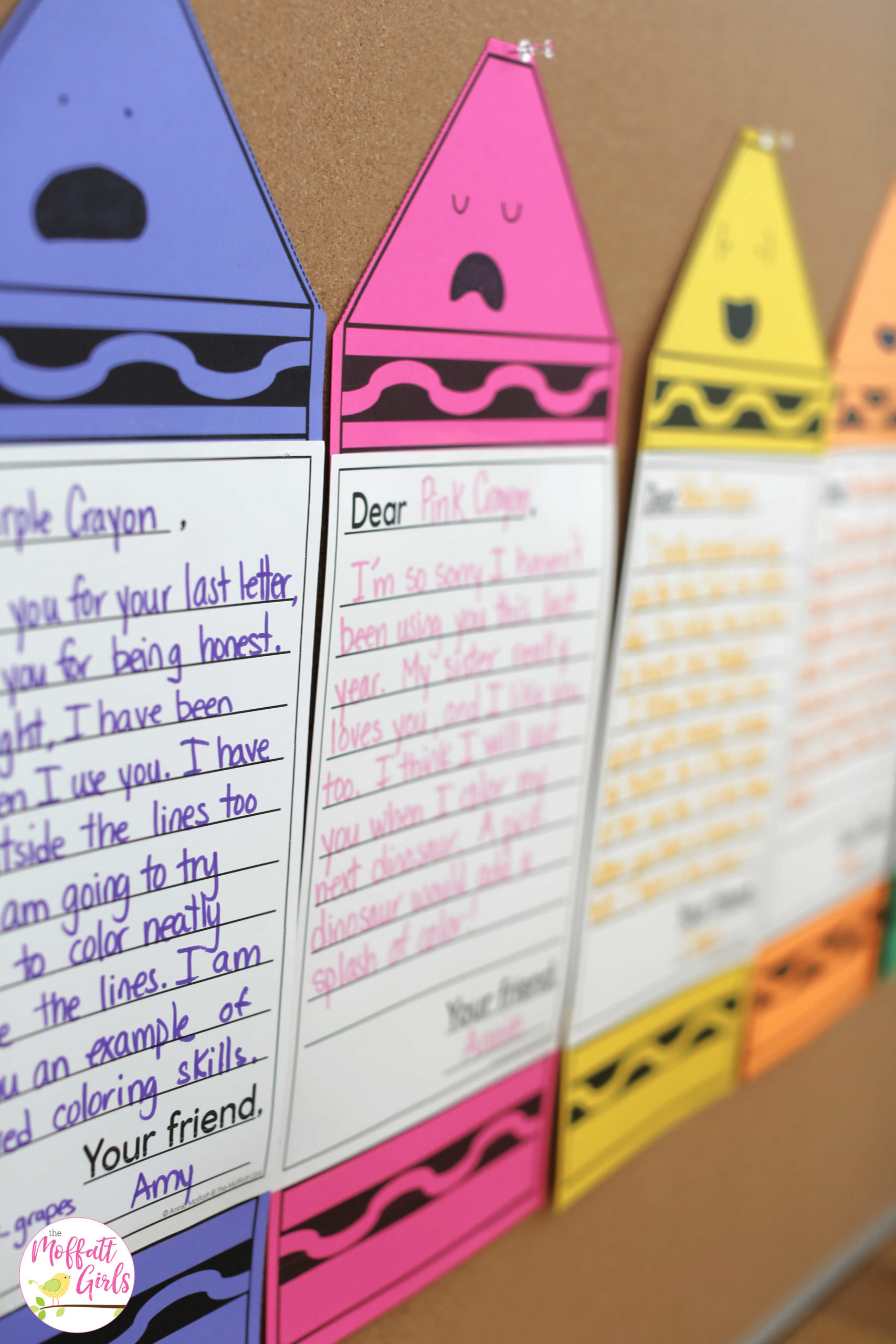The 1st Grade Reading Comprehension: Quarter 2 is here! Teaching foundational reading comprehension skills at an early age is a vital part of overall reading success throughout a child’s school career. Therefore, I’ve been working hard to create a First Grade Reading Comprehension Curriculum to help maximize reading understanding and minimize the teacher’s workload!
Throughout the curriculum, students will be exposed a variety of reading comprehension strategies through non-fiction and fiction texts. Building vocabulary will hold a strong focus throughout the curriculum, helping students gain a deeper understanding of what they are reading. Furthermore, students will learn to make connections between what they are reading and what they already know, while thinking deeply about what they have read.
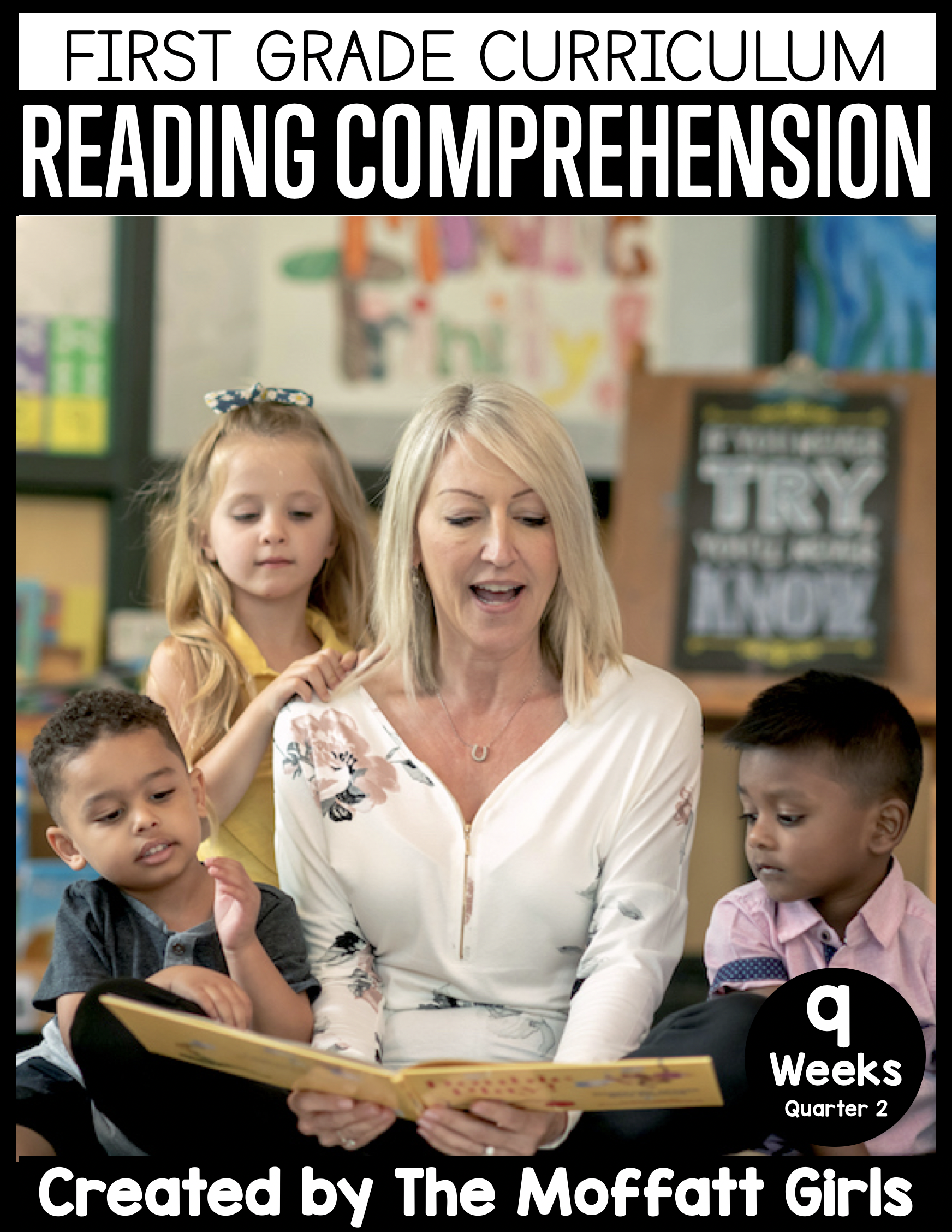
WHAT’S INCLUDED IN QUARTER 2:
This comprehensive First Grade Reading Comprehension curriculum is made up of 36 weekly books. Each book comes with four lesson plans. Quarter 2 includes the first 9 weeks of the curriculum. Here is the scope that outlines the books in each week. Note that The Bill Martin Jr. Big Book of Poetry and the National Geographic Book of Animal Poetry will be used throughout the entire

BOOK 1: Rosie Revere, Engineer
This is a great book to introduce the theme of the first few books in Quarter 2 of the 1st Grade Reading Comprehension curriculum.
LESSON PLANS
Each book has 5 lessons that can be taught throughout the week.

I’ve made book marks with prompting questions that you can use as you are reading the text aloud to your students. These questions help students think deeper about the text.
IDENTIFYING THE GENRE & MAKING PREDICTIONS
Before reading the book, students identify the genre and predict what will happen in the story based on a picture walk-through.
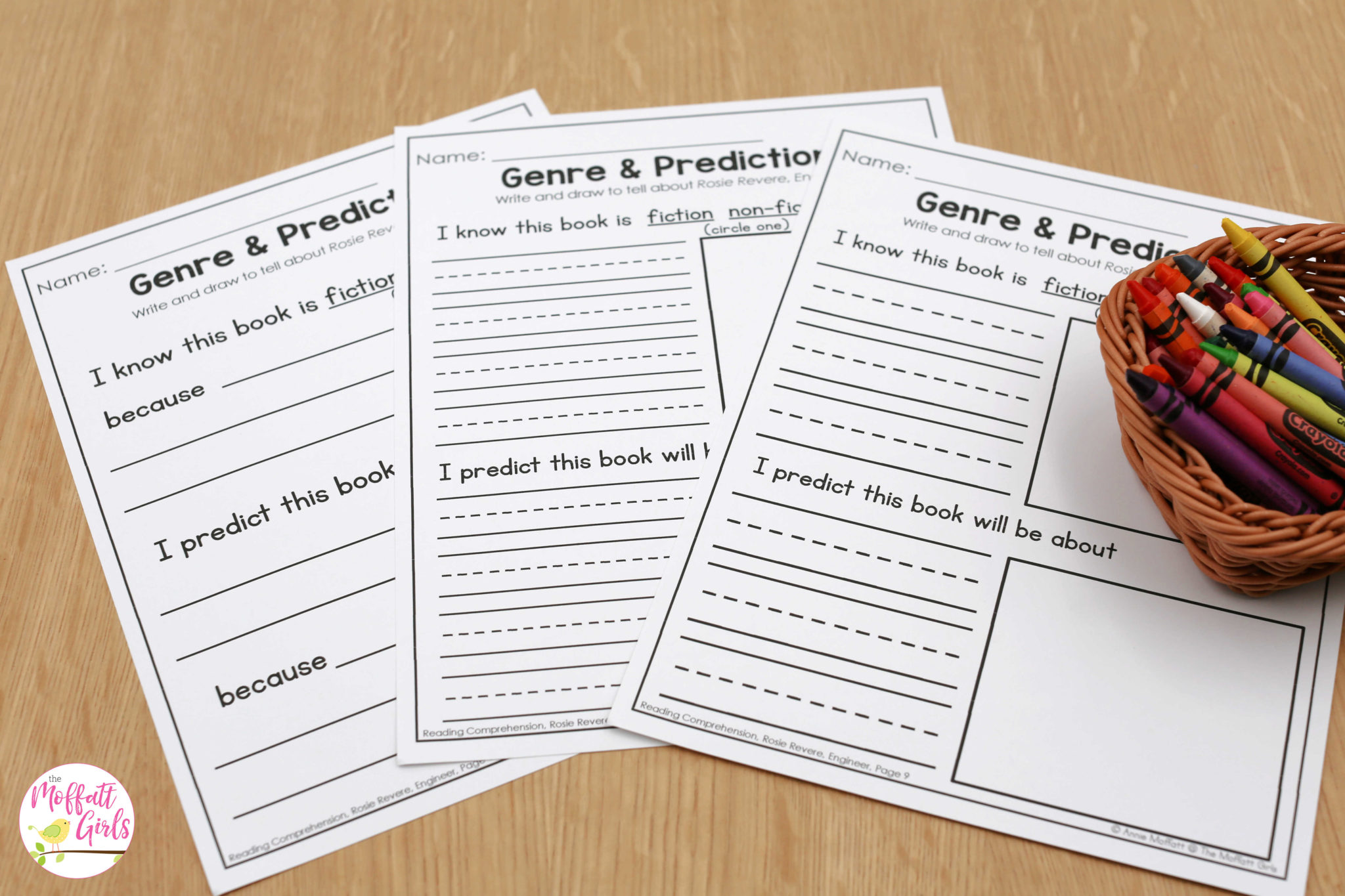
VOCABULARY FOCUS
There are 6 vocabulary words pulled from each book. You can introduce these words before reading the book to your students to help them understand what is happening in the book as you are reading it.
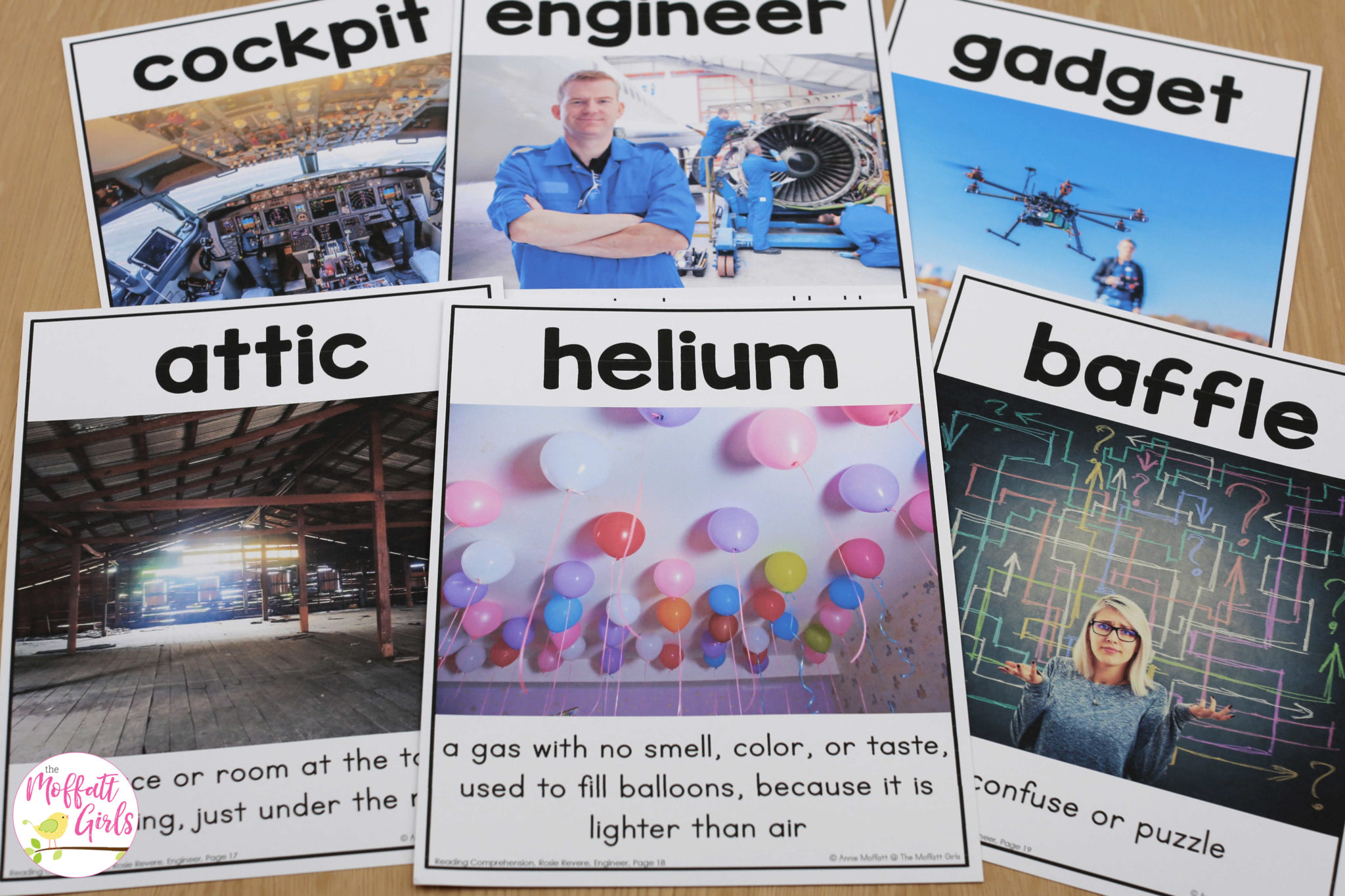
I’ve made multiple versions for your convenience: full-page for each word, 3 to a page, and a combined poster.
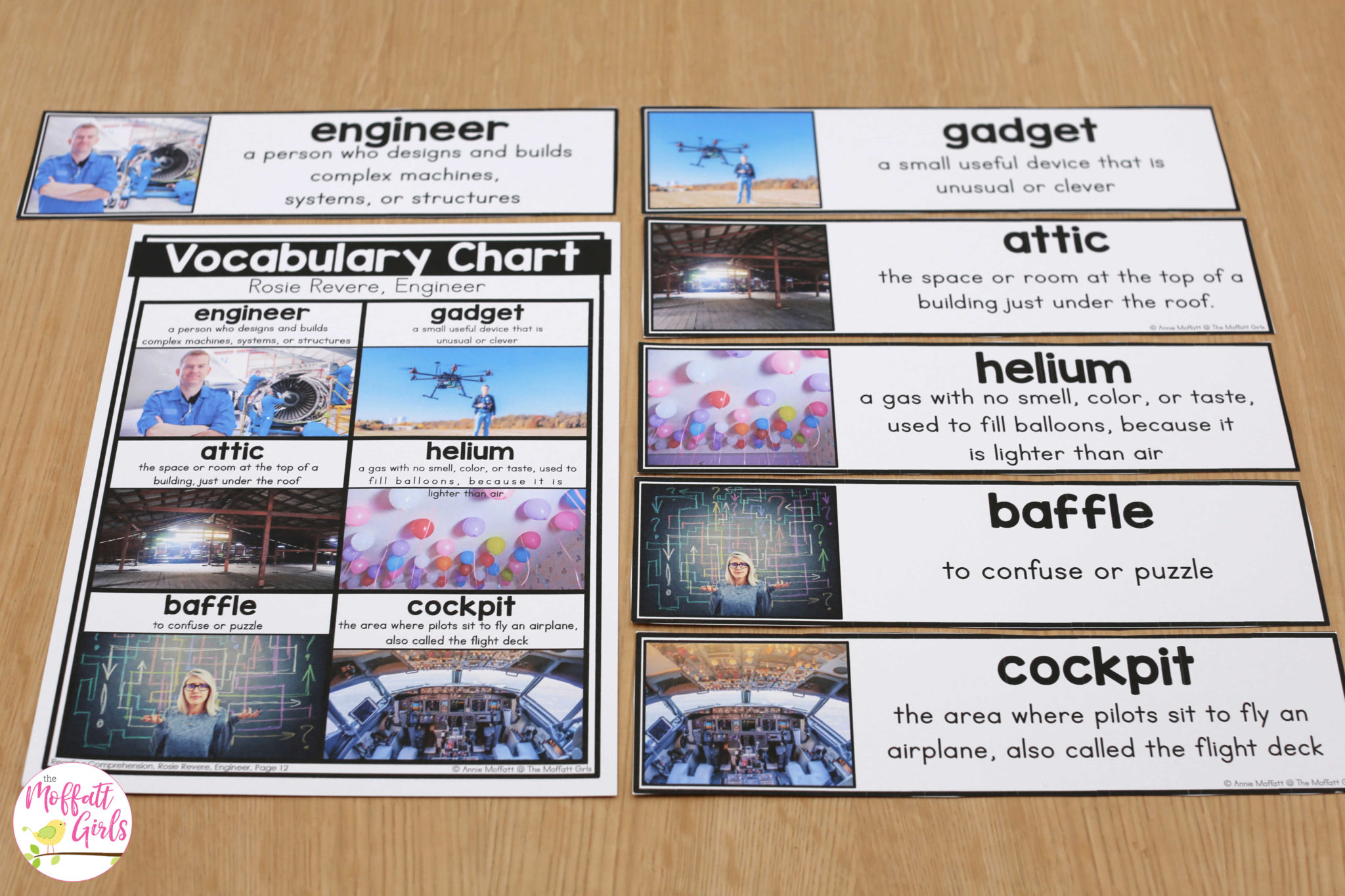
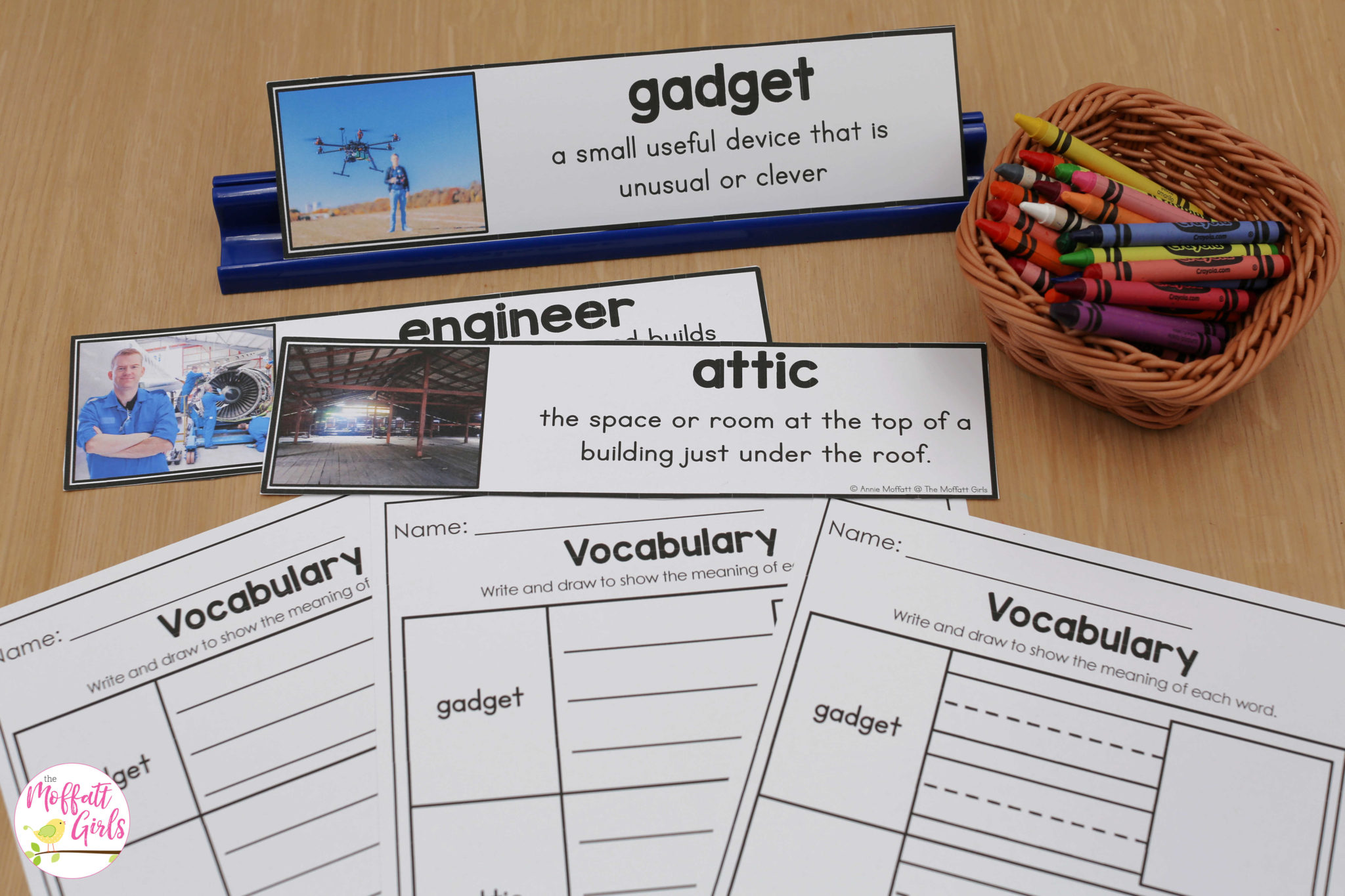
In addition to the vocabulary introduction, students can practice understanding words by using context clues.
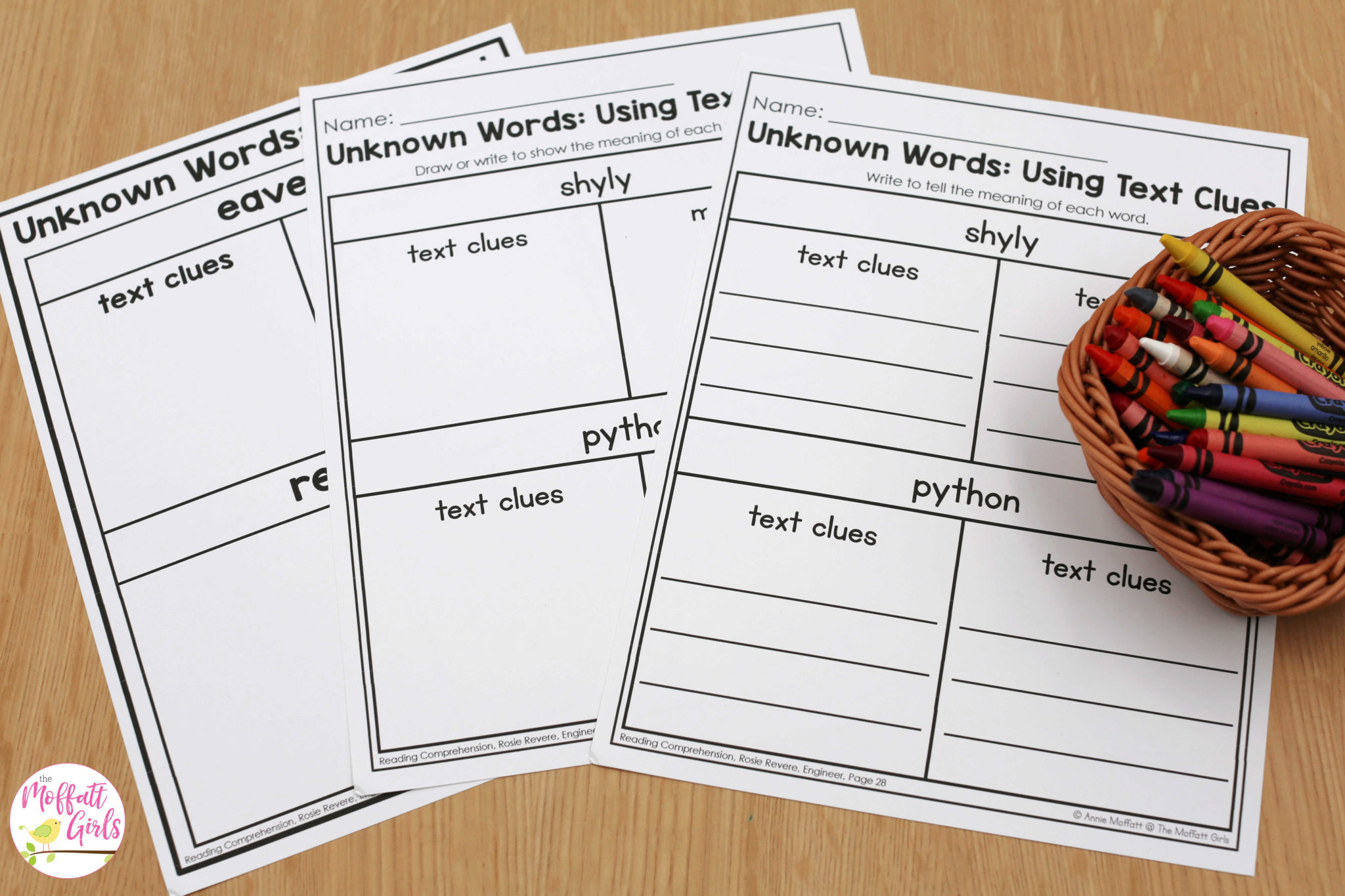
NON-FICTION TEXT CONNECTION
This component offers students the opportunity to learn more about a non-fiction topic that is related to the story. The main character in Rosie Revere, Engineer has an aunt who resembles the made-up character of Rosie the Riveter. Therefore, this non-fiction text connection is perfect!
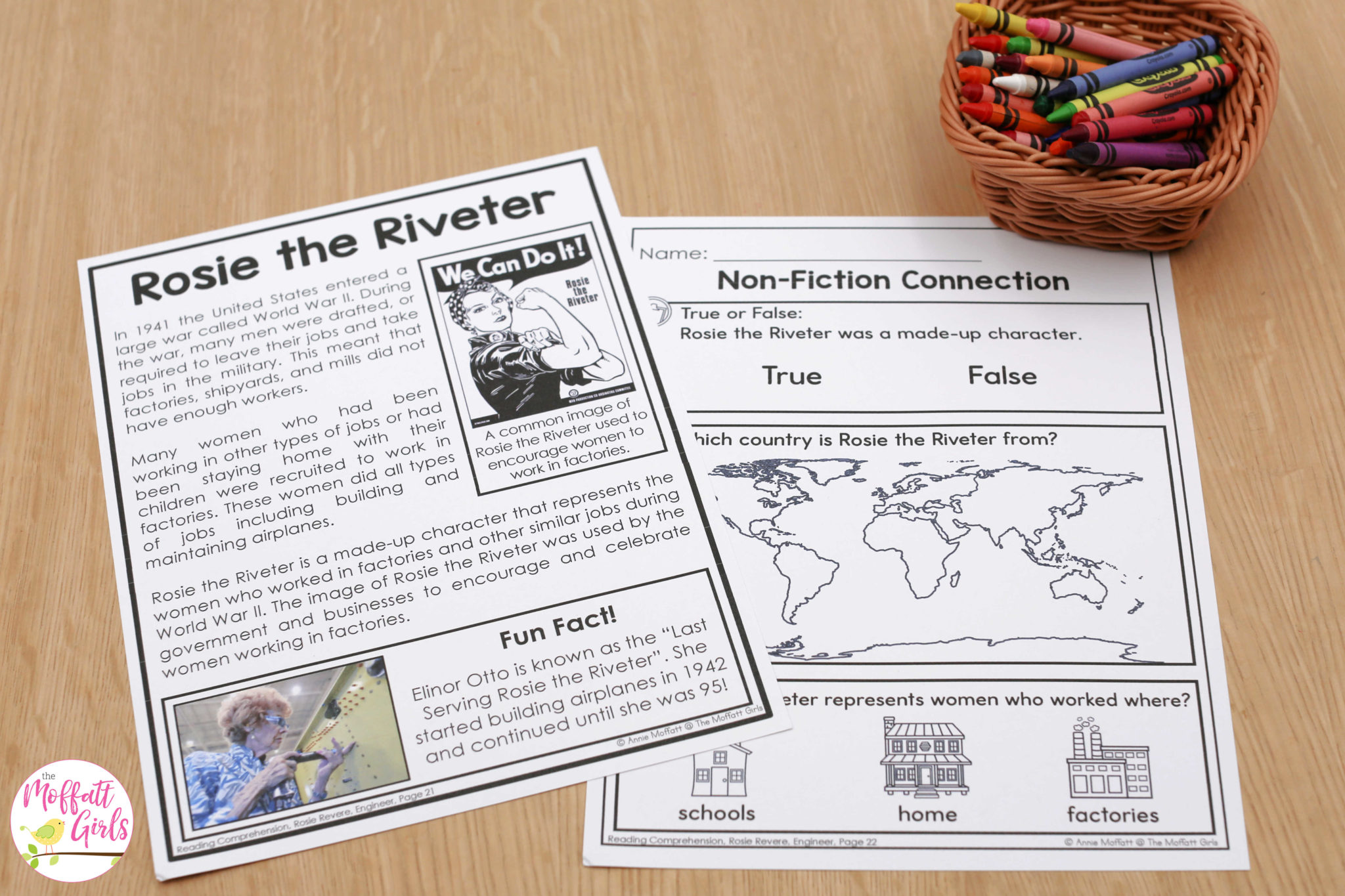
Character Study
You can have students take an in-depth look at what the main character looks like, feels like and does or thinks throughout events in the story.
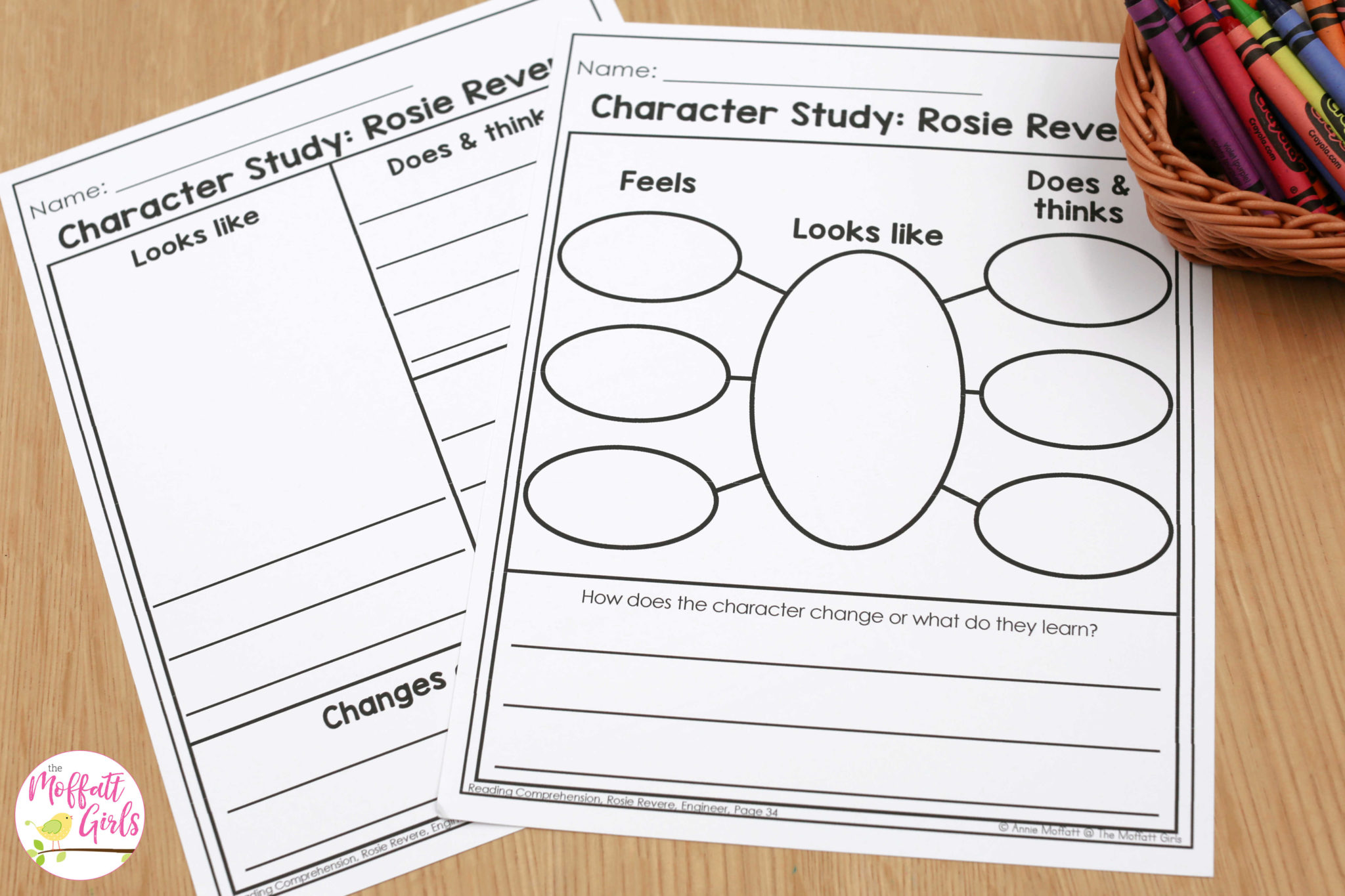
STORY SEQUENCING
The Sequence a Story center gives students the opportunity to practice putting a simple story in order so that it makes sense. Then during the whole-group lesson, you can work together to put each part of Rosie Revere, Engineer in order.
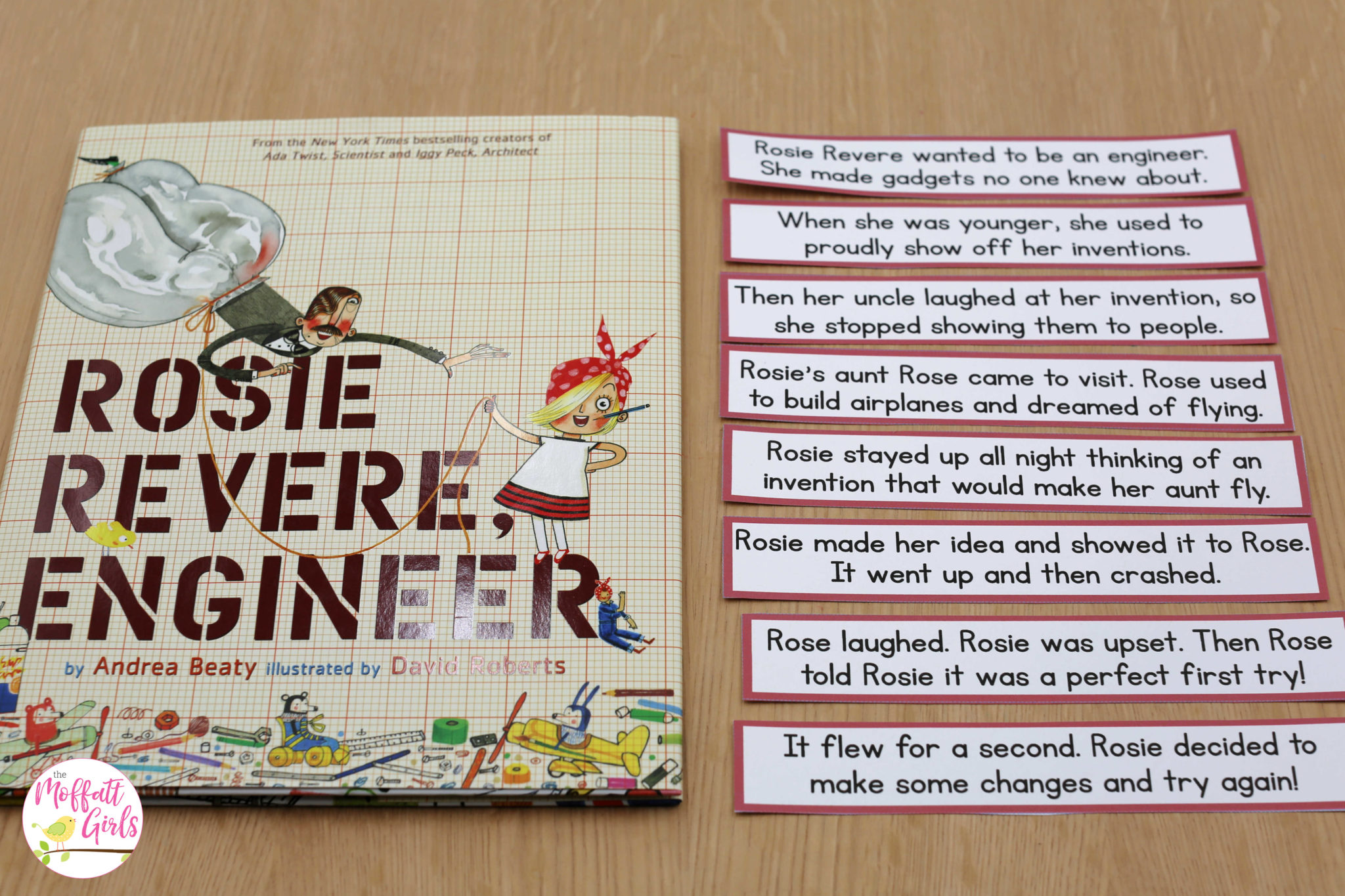
CRAFT
At the end of each week, students will complete a fun craft to show a concept that they learned from the book. The craft for this week is creating an invention book where students can share their ideas of how they can solve a given problem.
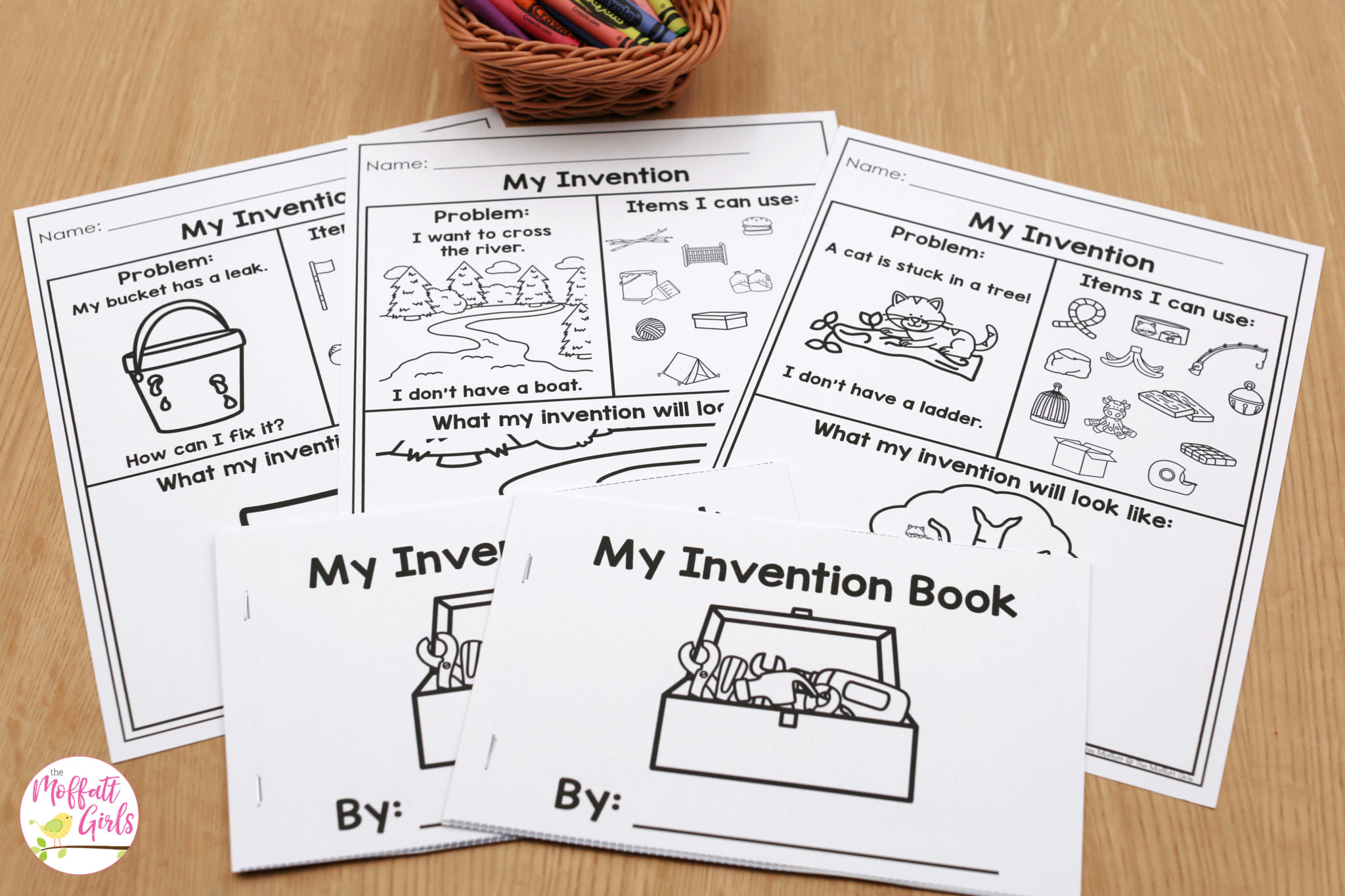
BOOK 2: Balloons Over Broadway
Balloons Over Broadway is the second book in Quarter 2 of the 1st Grade Reading Comprehension Curriculum. It is the perfect book to follow Rosie Revere, Engineer, because it continues the theme of inventing!
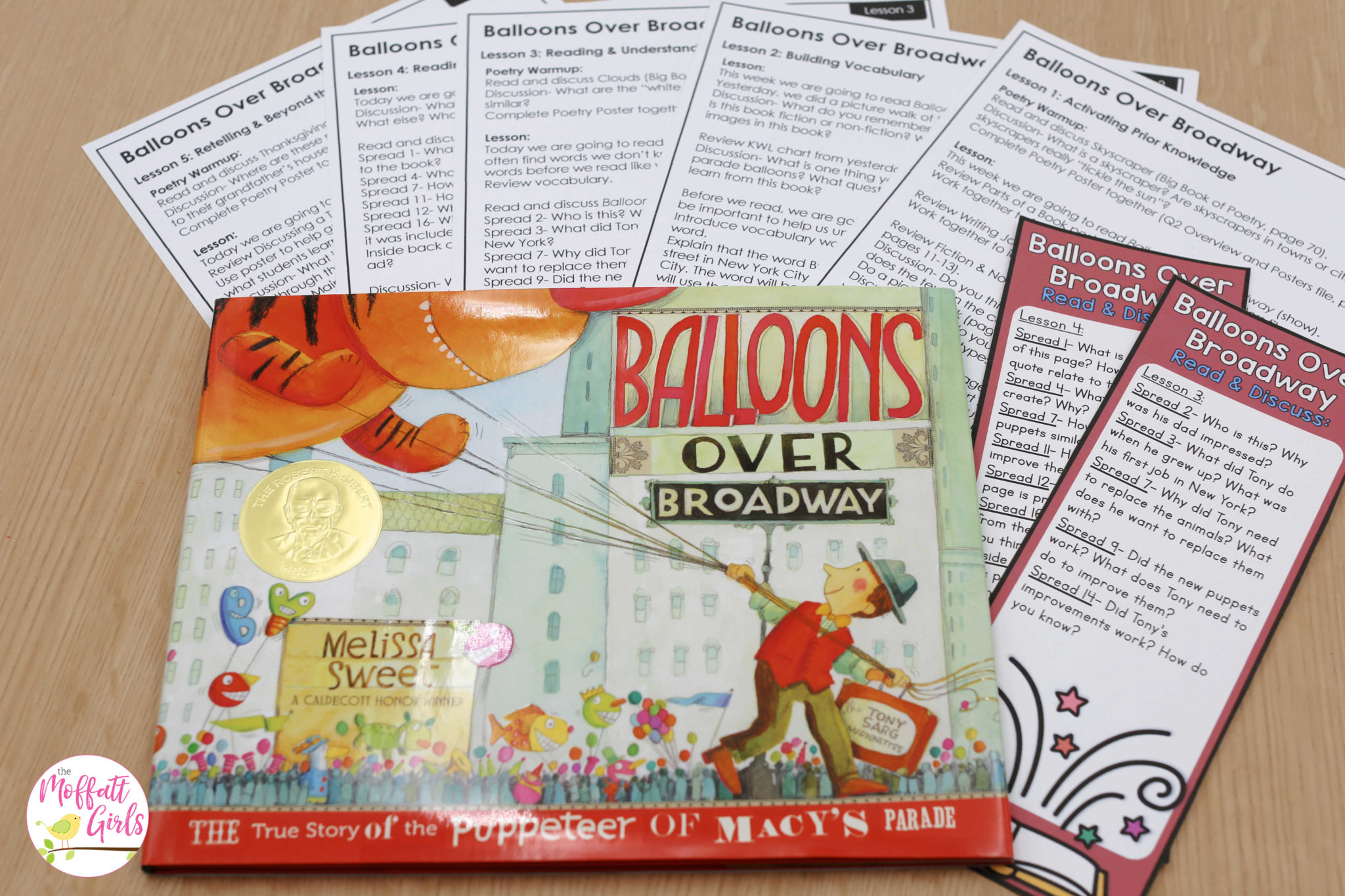
KWL CHART
Before you read the book, ask students what they know and would like to know about the topic. Then once you have read the book to your students, revisit this poster and ask students what they learned about the topic from the book.
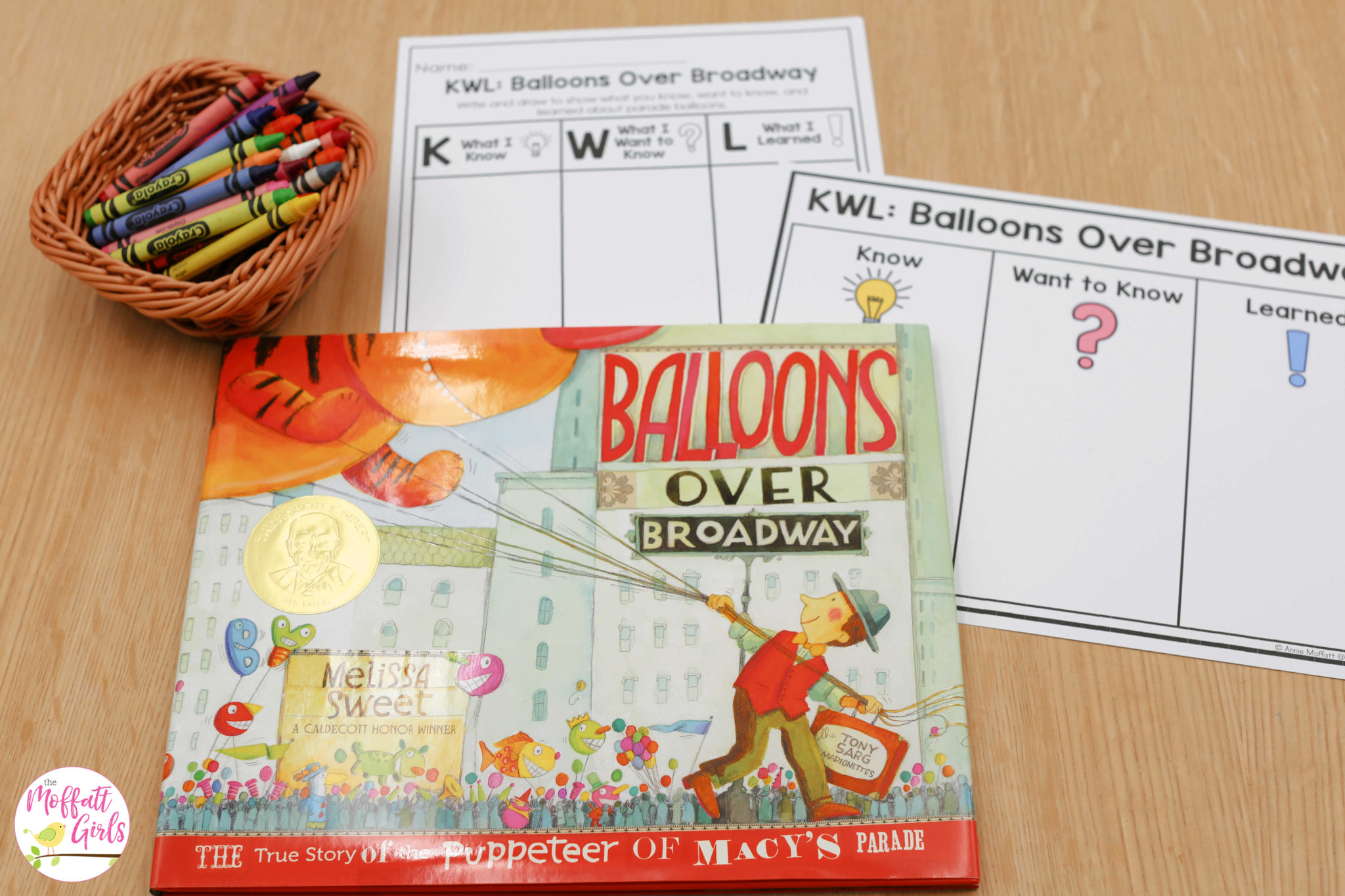
Map Directions Center
This is a fun center in which students use the map to follow the direction on a card to decide which building they pass.
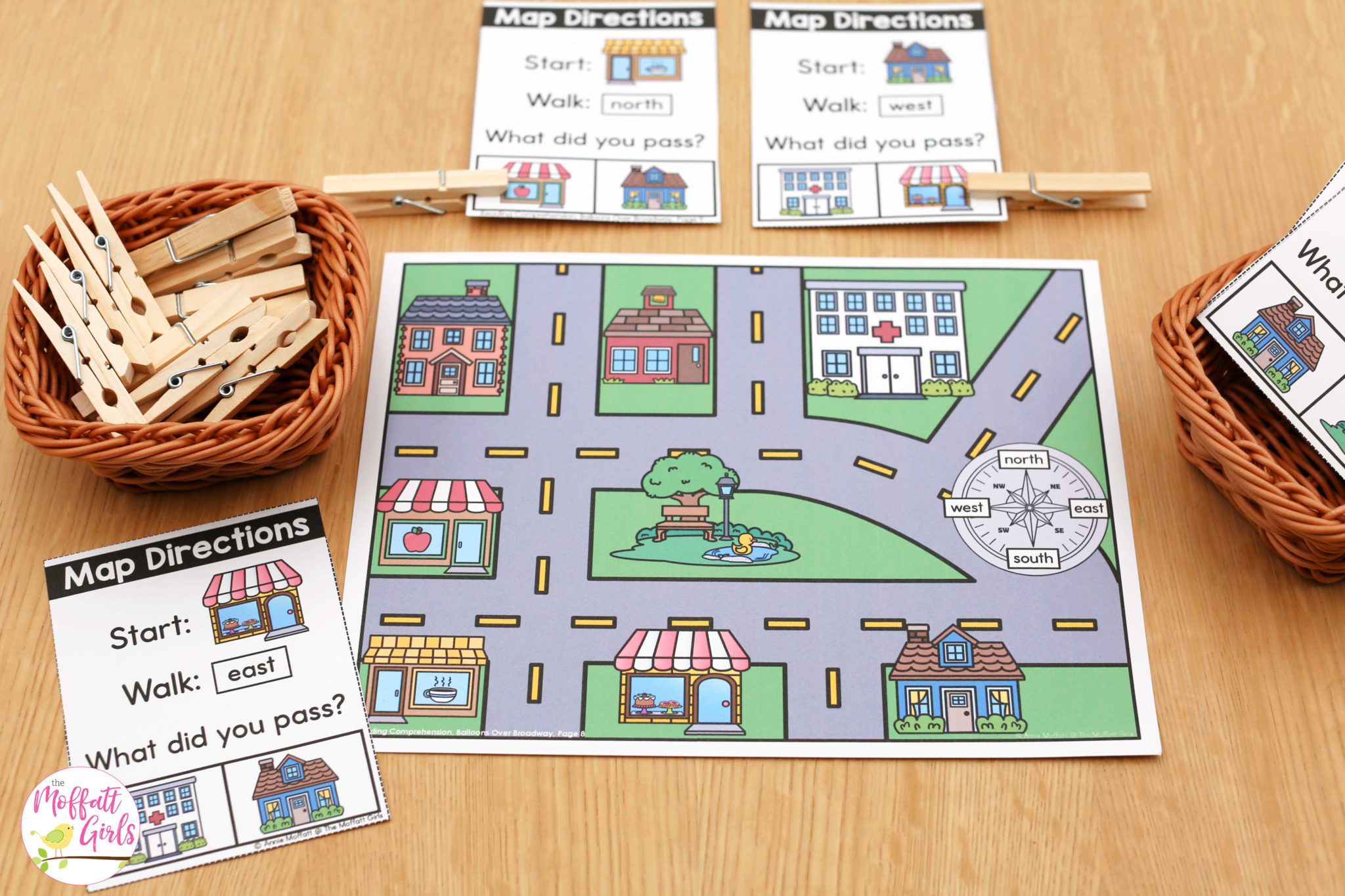
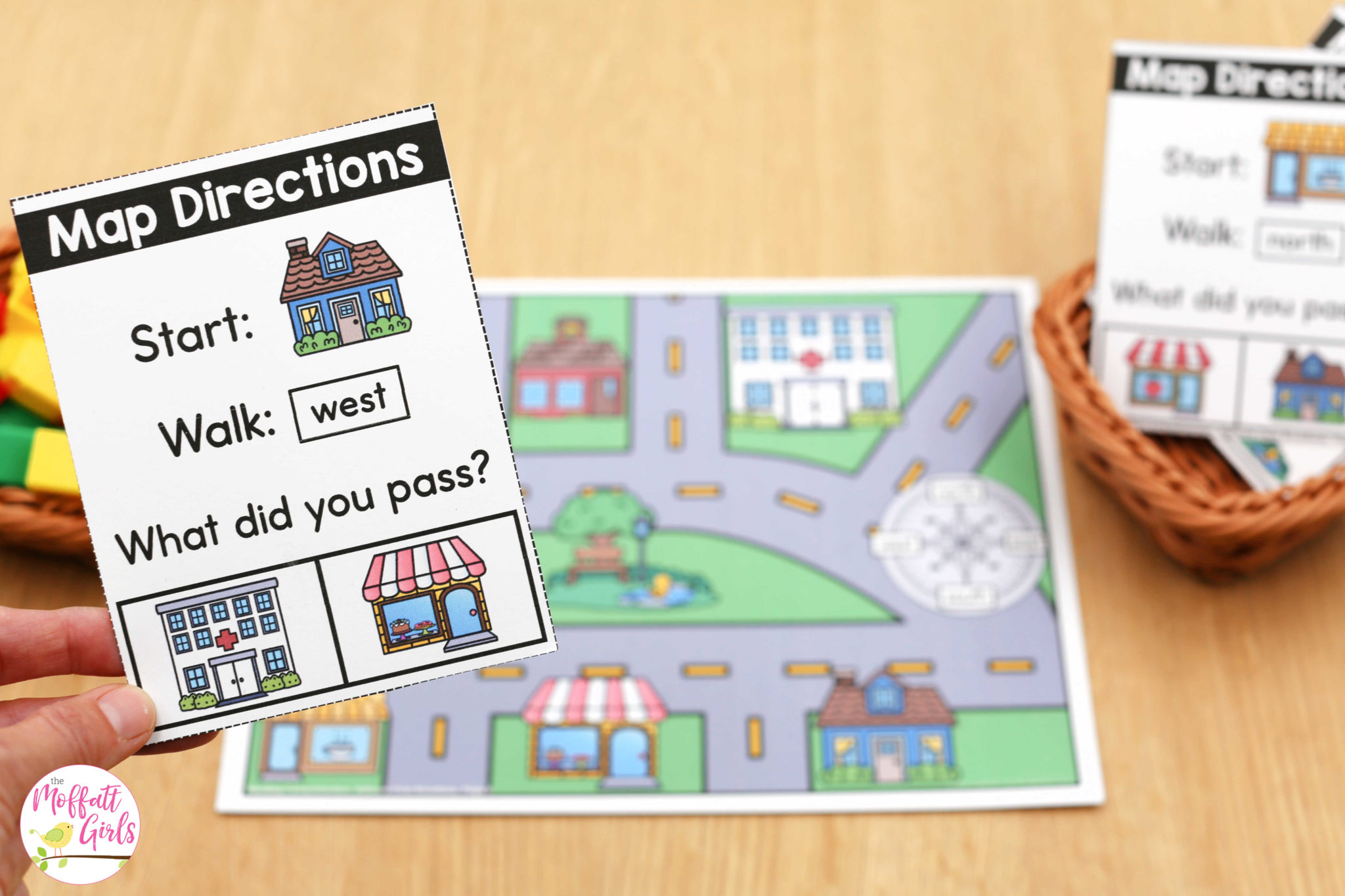
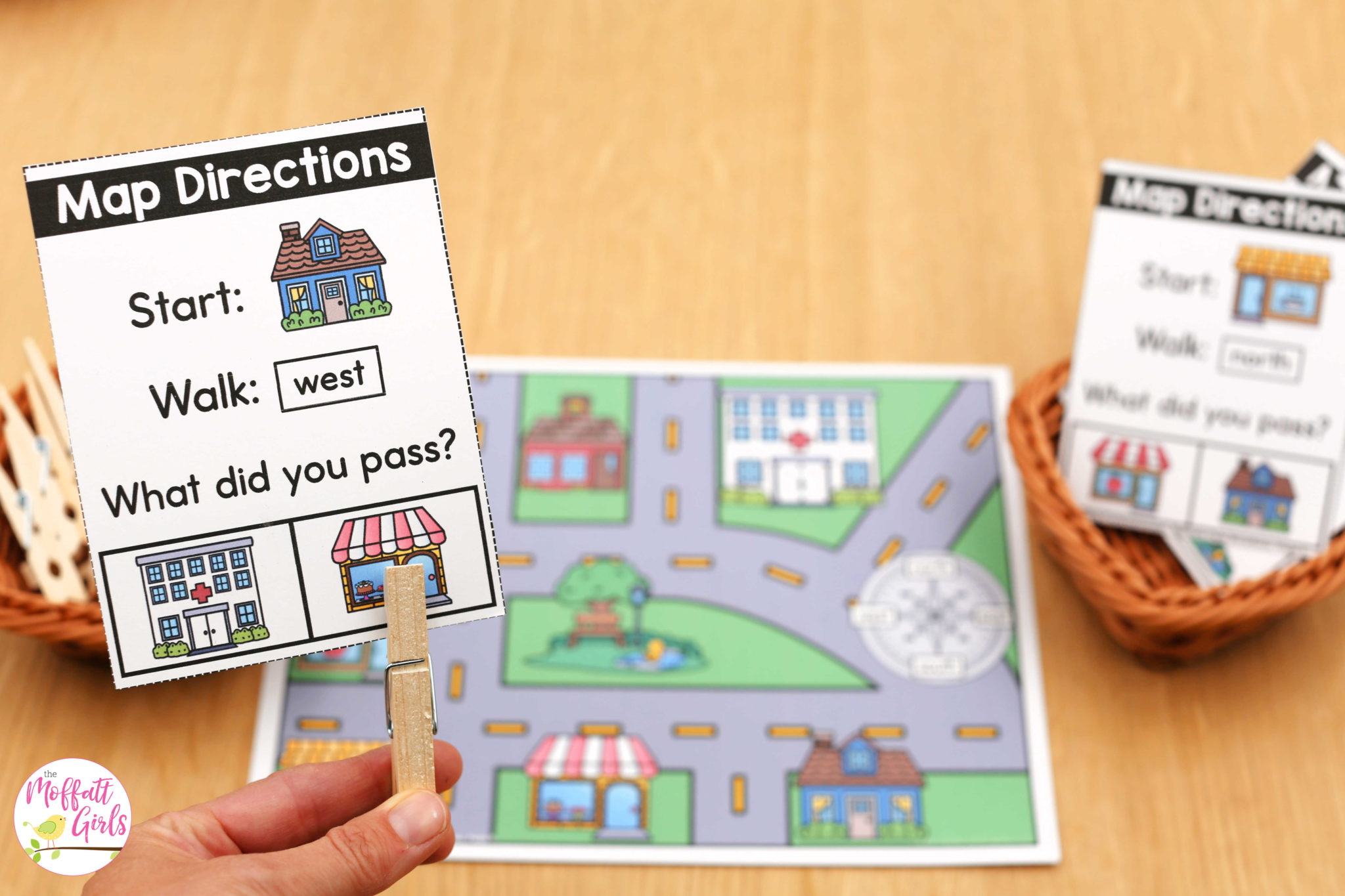
VOCABULARY
In early literacy, forming a basic understanding of the language that is used in a book before you begin reading can make a big difference in understanding. Therefore vocabulary introduction comes before reading the book in the lesson plans.
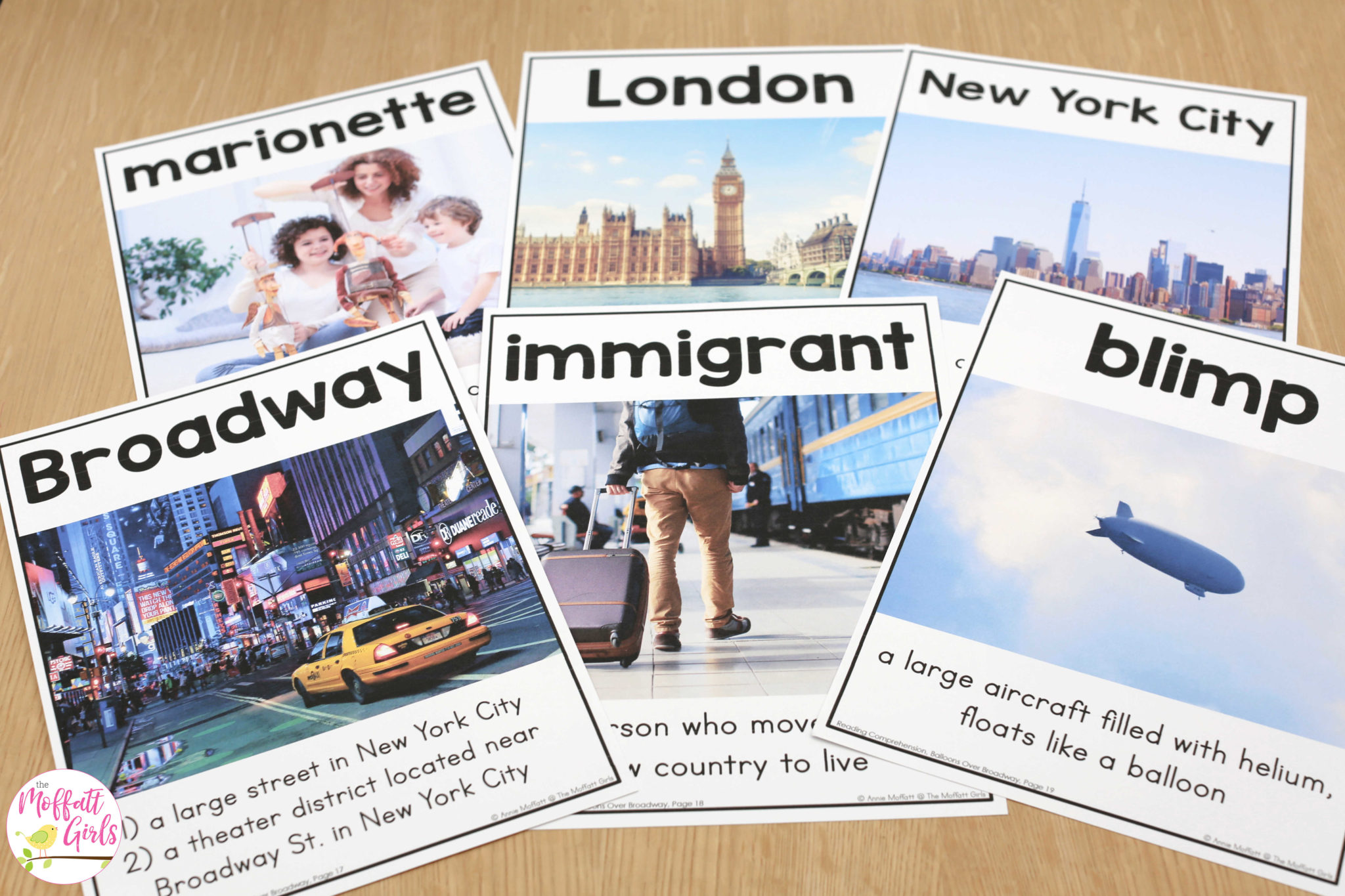
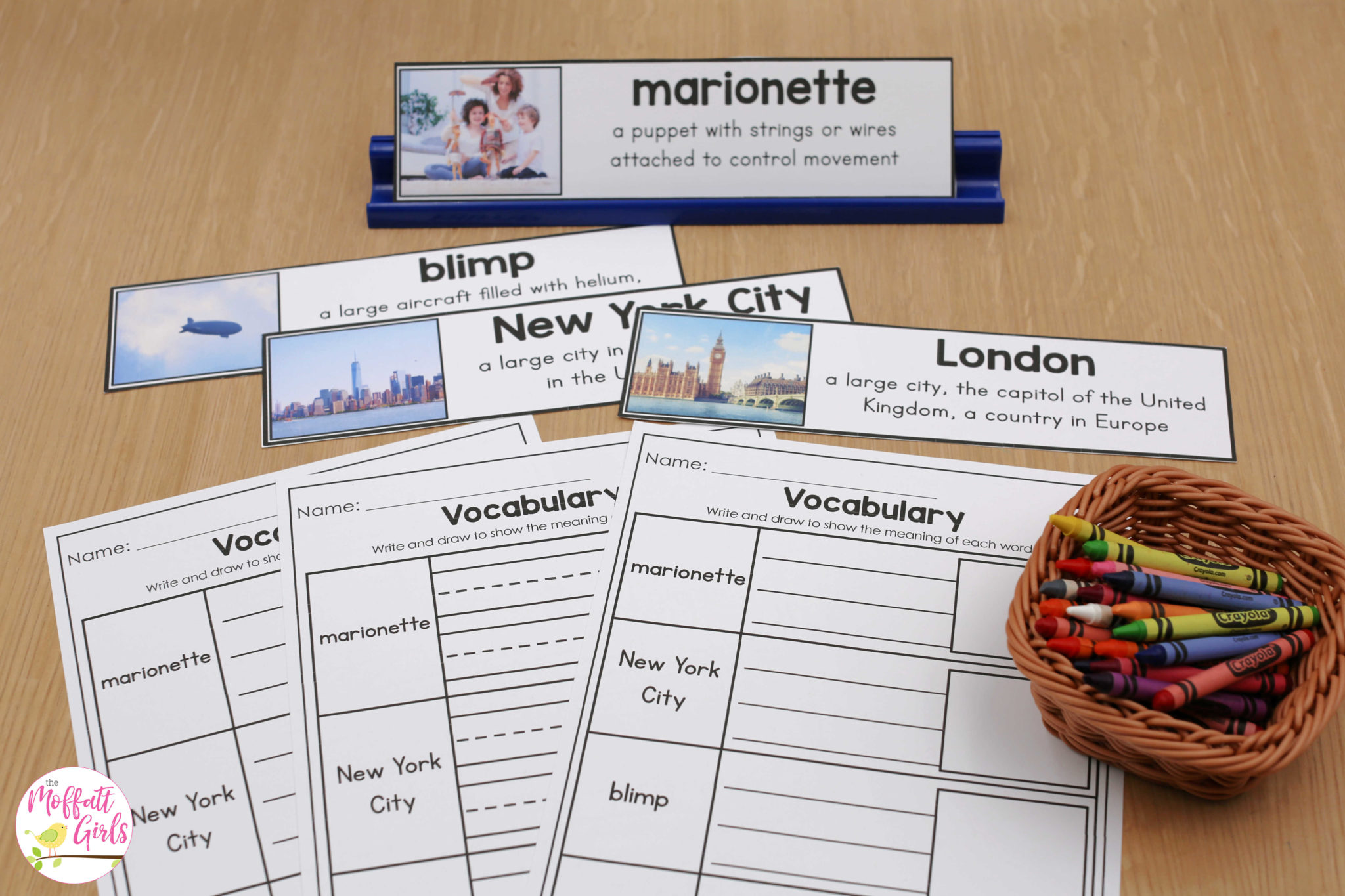
Compare and Contrast
By the end of the week, students have a good understanding about the similarities and differences of the first 2 books in Quarter 2 of the 1st Grade Reading Comprehension.
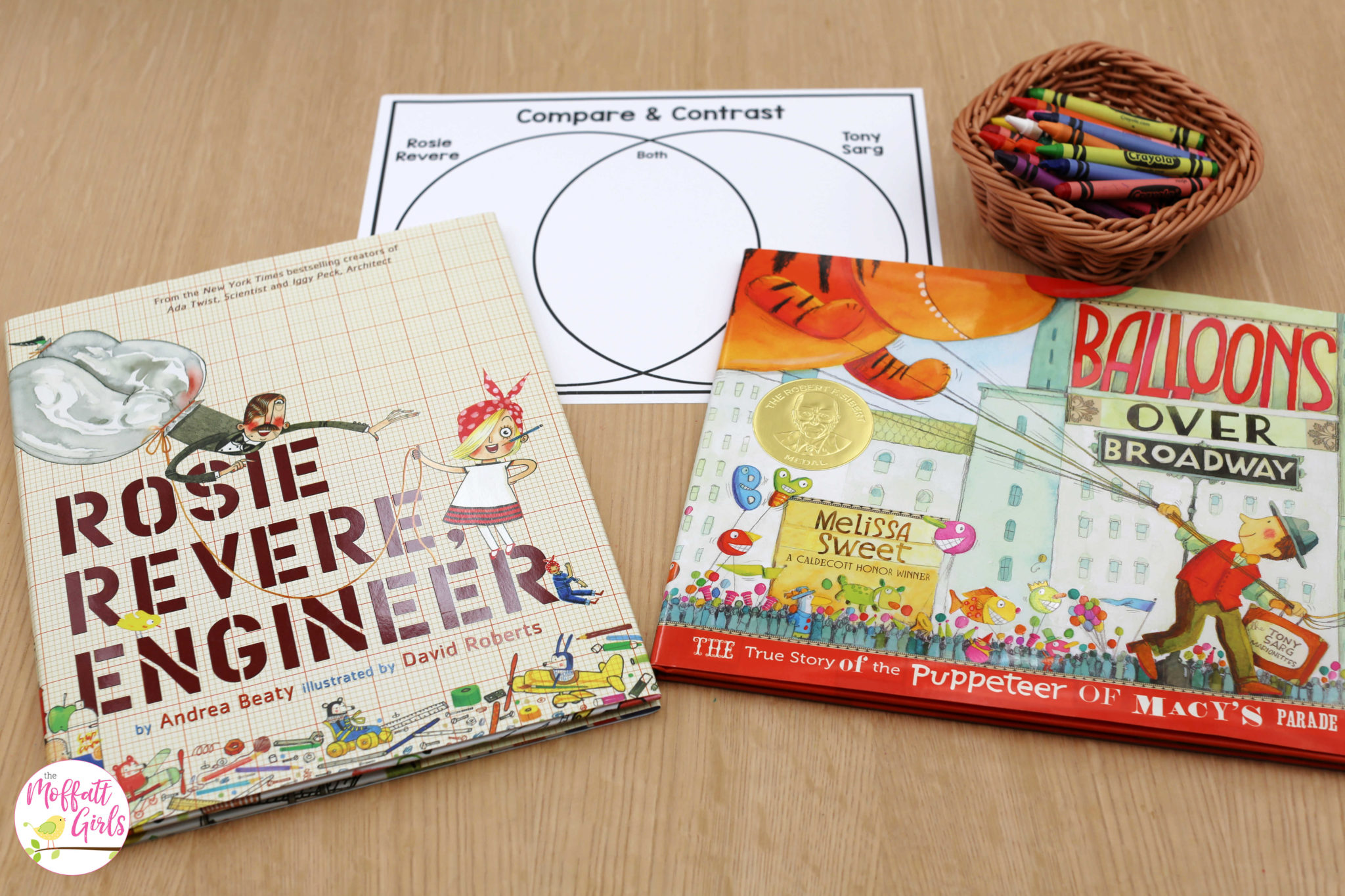
CRAFT
For this craft, students relate the inventor theme by identifying an item from each book that uses helium. Then they “invent” a third item that could use helium.
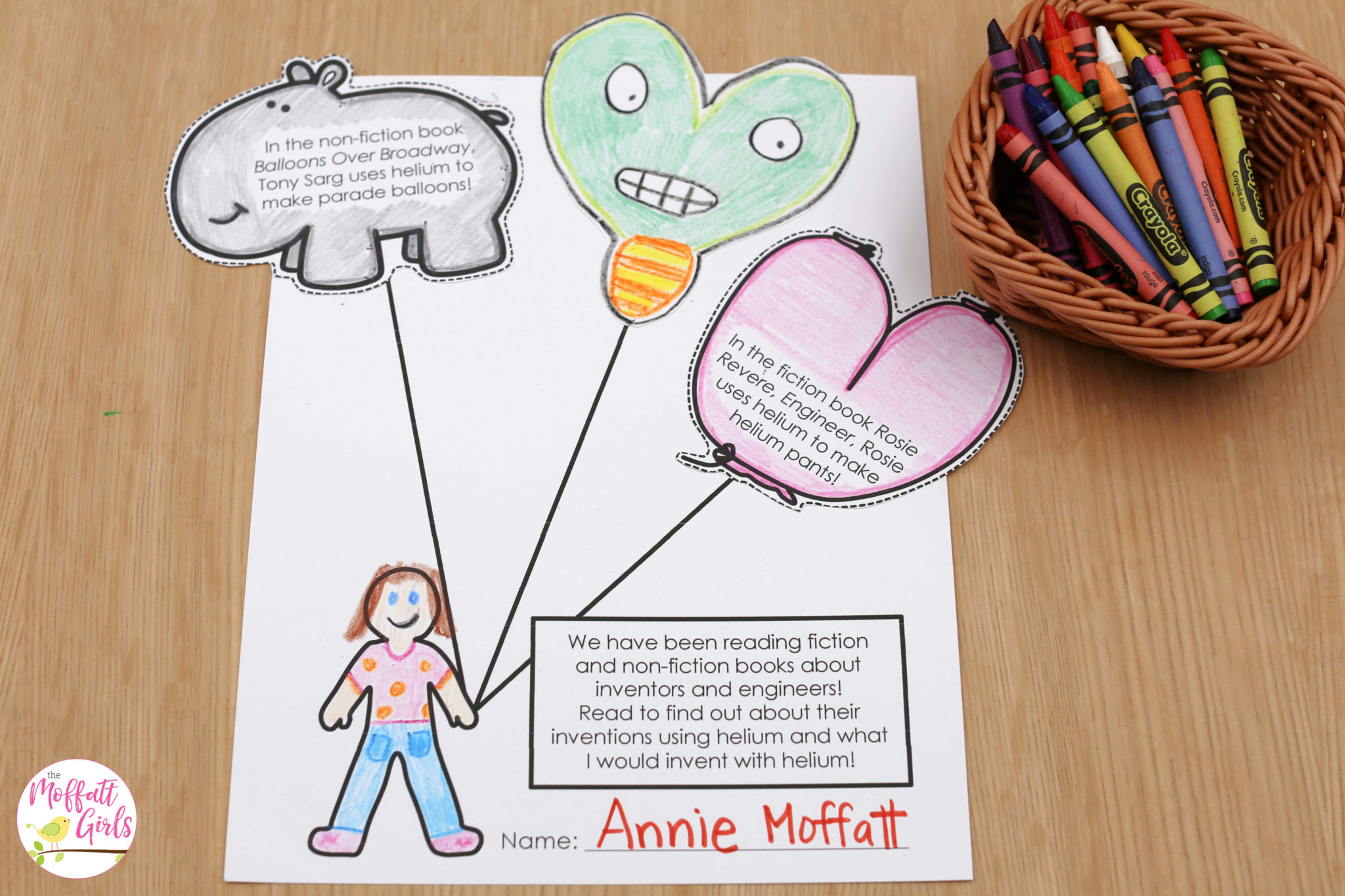
BOOK 3: The Day the Crayons Quit
This story is an absolute favorite for so many reasons! The idea that the crayons would have the personalities they do is just one of the many things that make this book adorable.
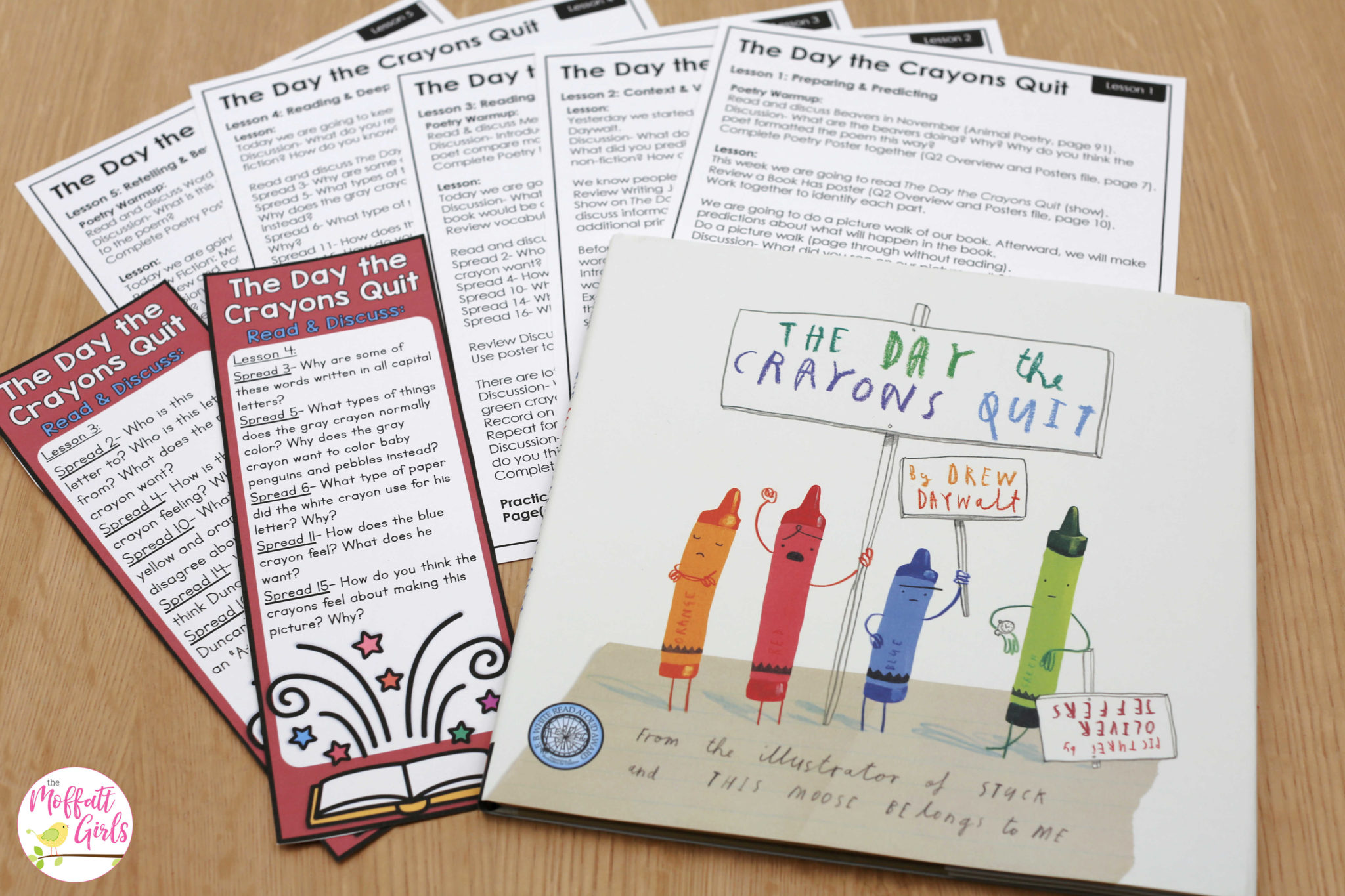
IDENTIFYING THE GENRE & MAKING PREDICTIONS
Students identify the genre and predict what will happen in the story.
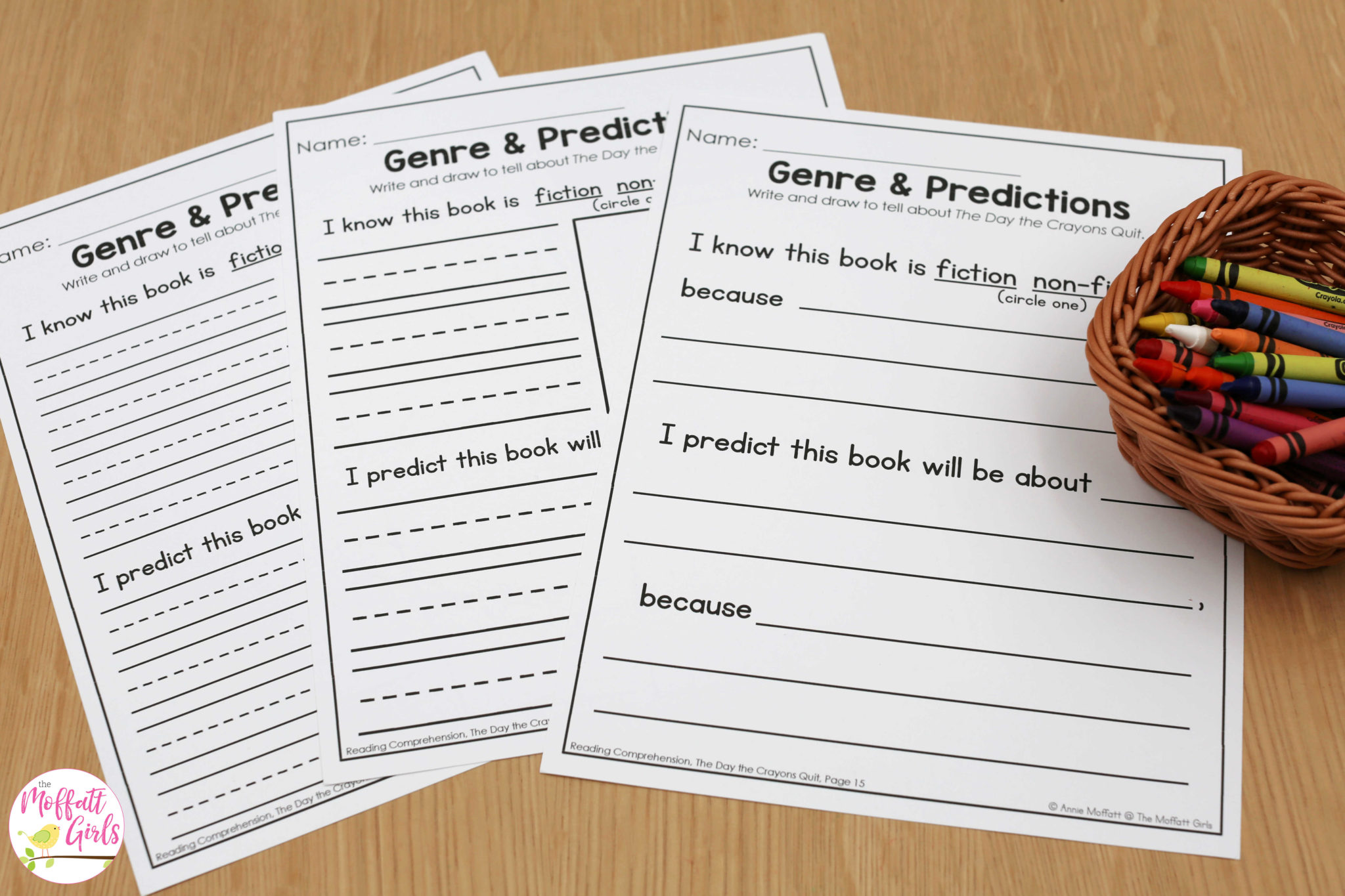
VOCABULARY
Below are the vocabulary word posters for The Day the Crayons Quit.
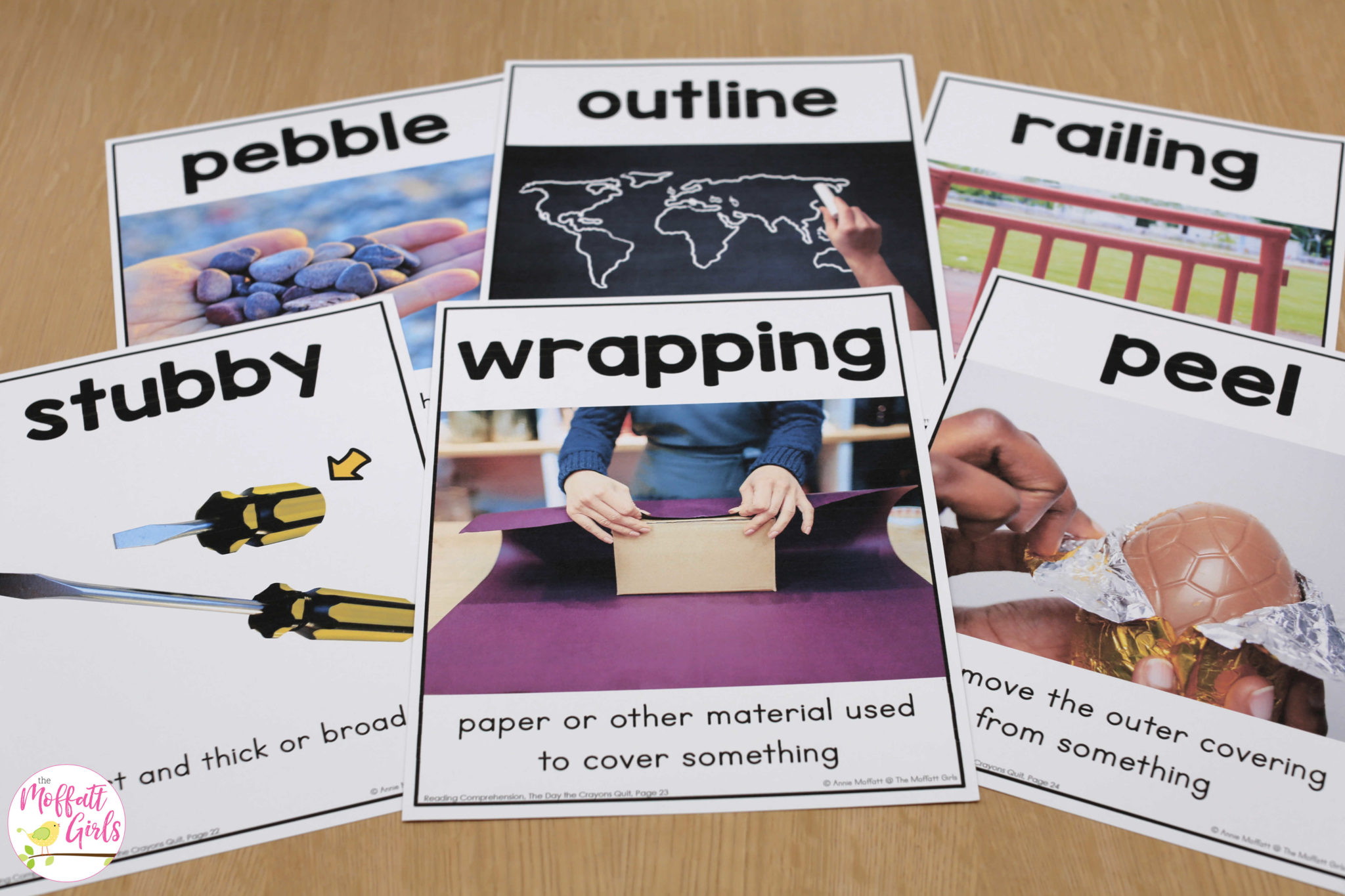
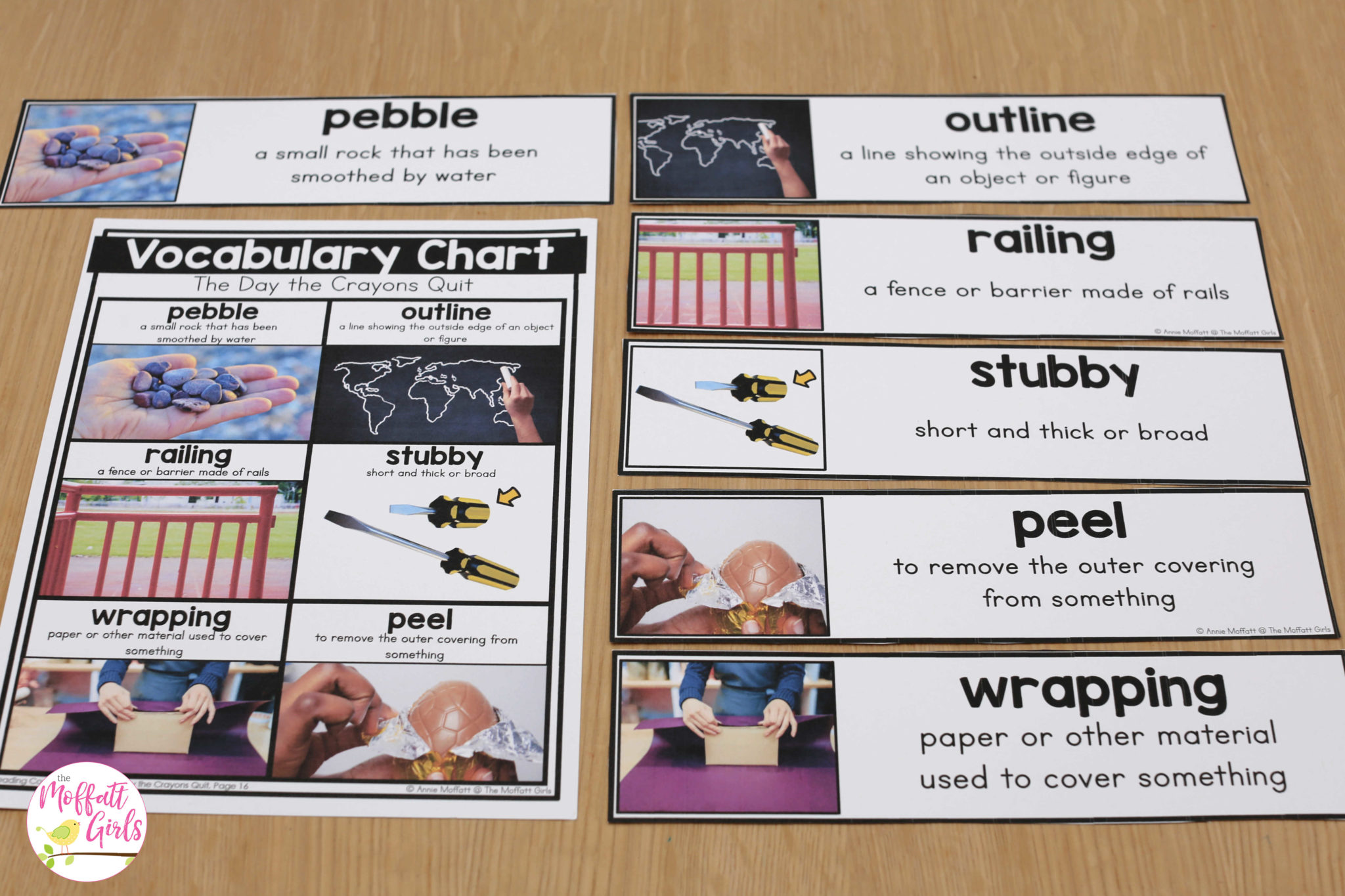
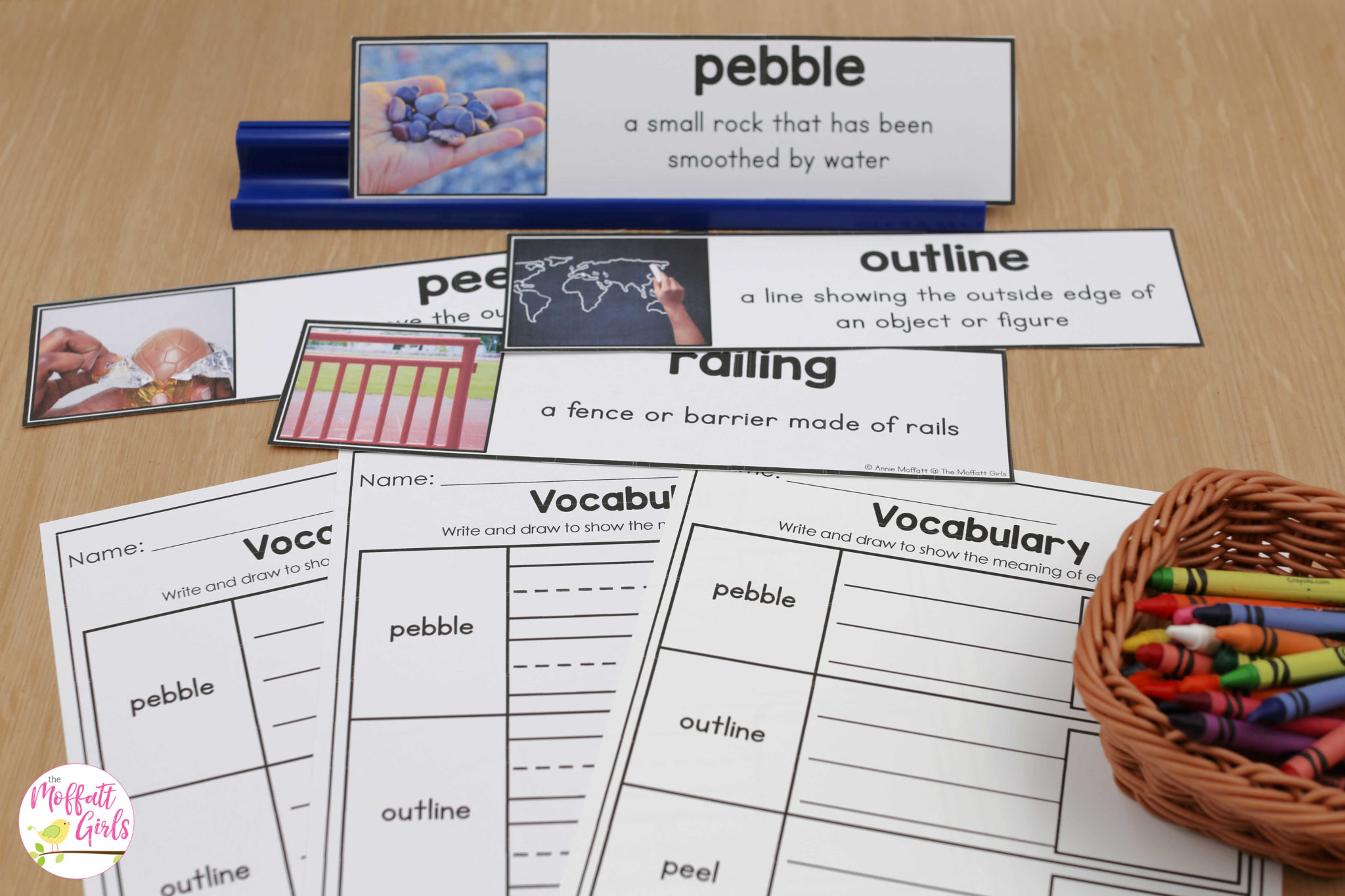
NON-FICTION TEXT CONNECTION
The non-fiction text connection for The Day the Crayons Quit introduces how colors work, and students learn how a color wheel works.
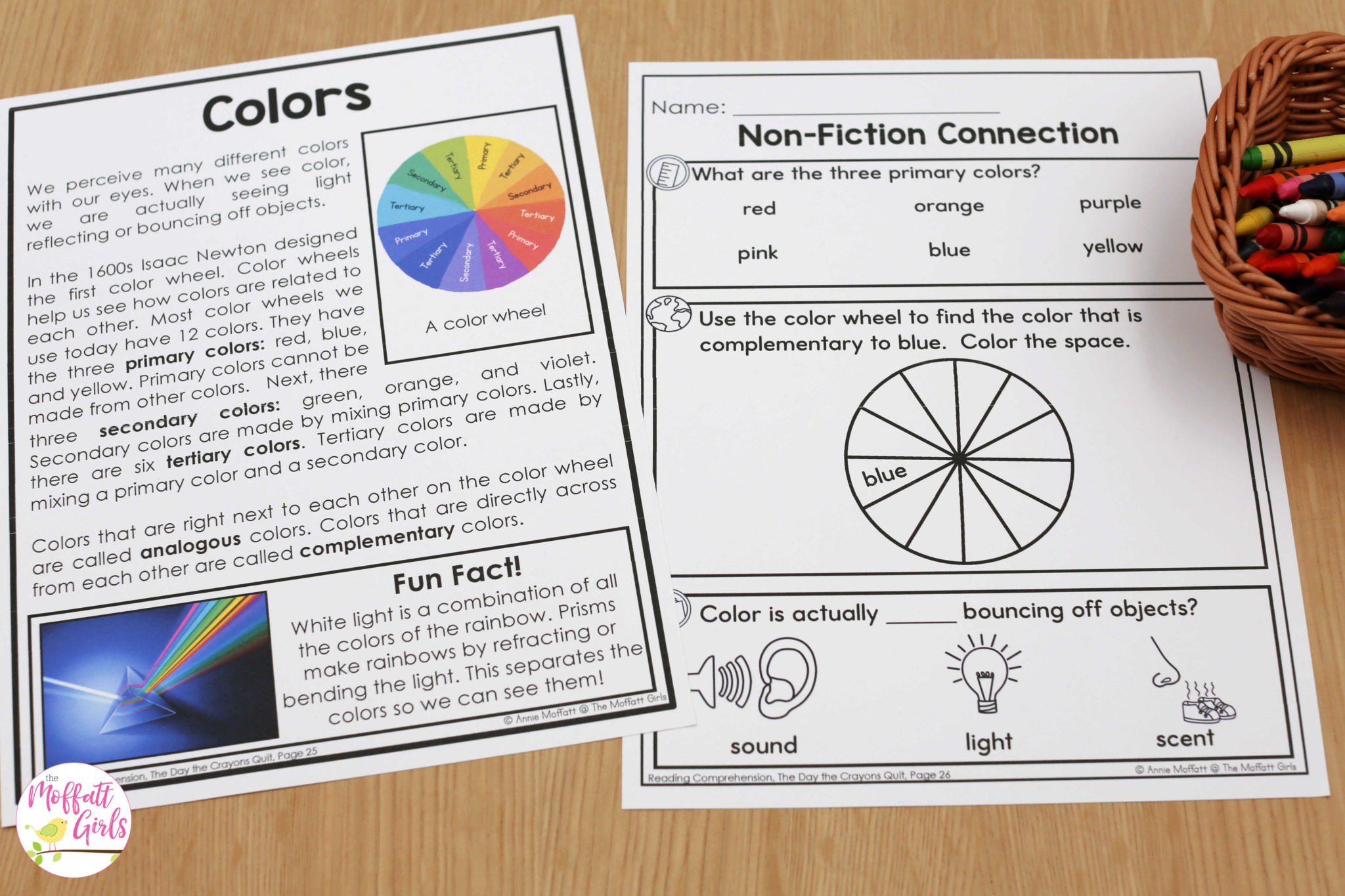
Problem & Solution
In The Day the Crayons Quit, the crayons present a long list of concerns to the main character, Duncan. They also offer their thoughts on what they feel would be the best solutions to the problems. This offers the perfect opportunity for students to identify those within the story.
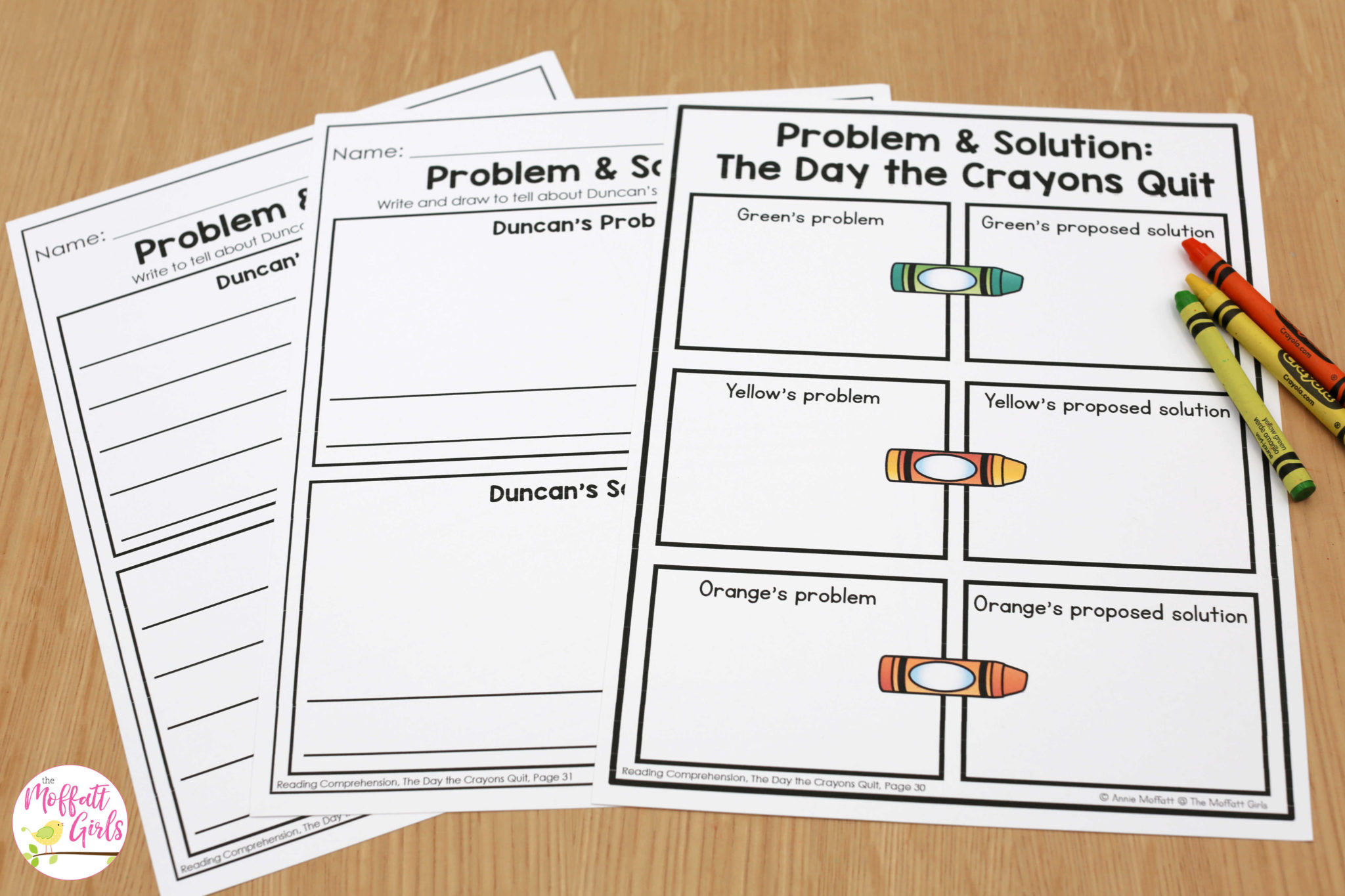
SEQUENCING
By sequencing the story, students can replay the story to know what happened first. This reinforces the cause and effect center they completed earlier on in the week.
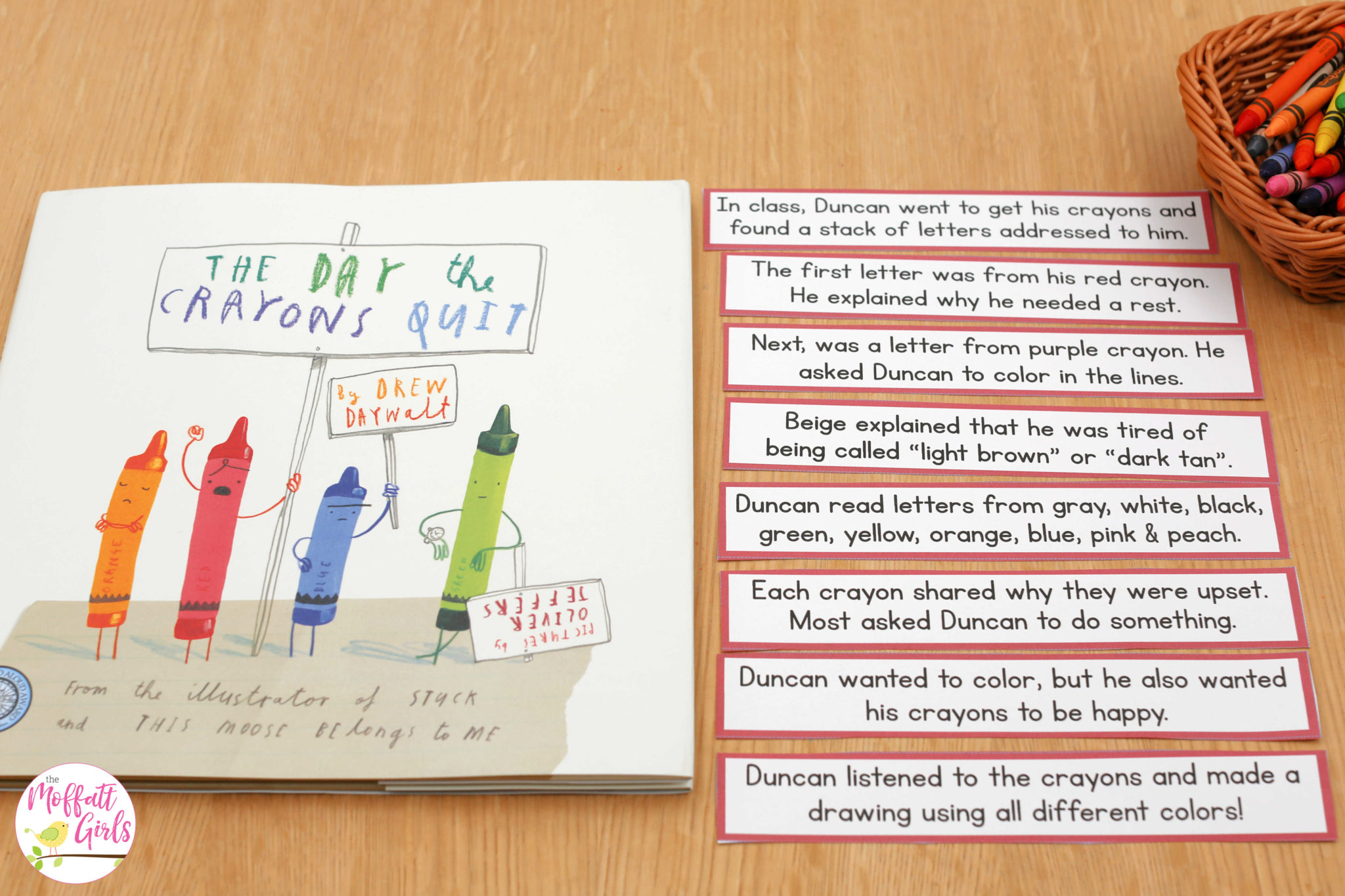
CRAFT
For this craft, students pick a color to write to in order to offer a solution or response to their concern. I obviously had way too much fun writing these letters!
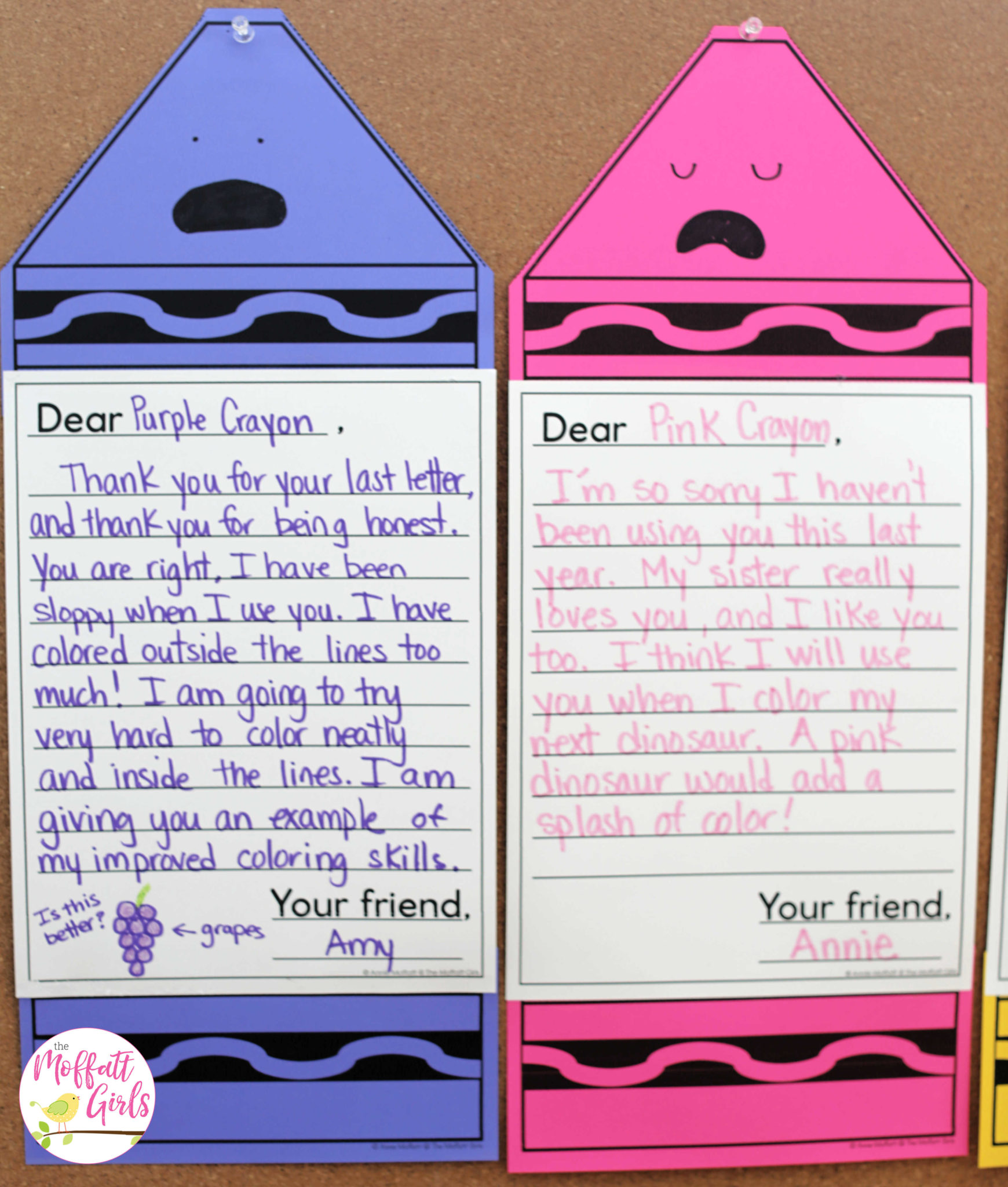
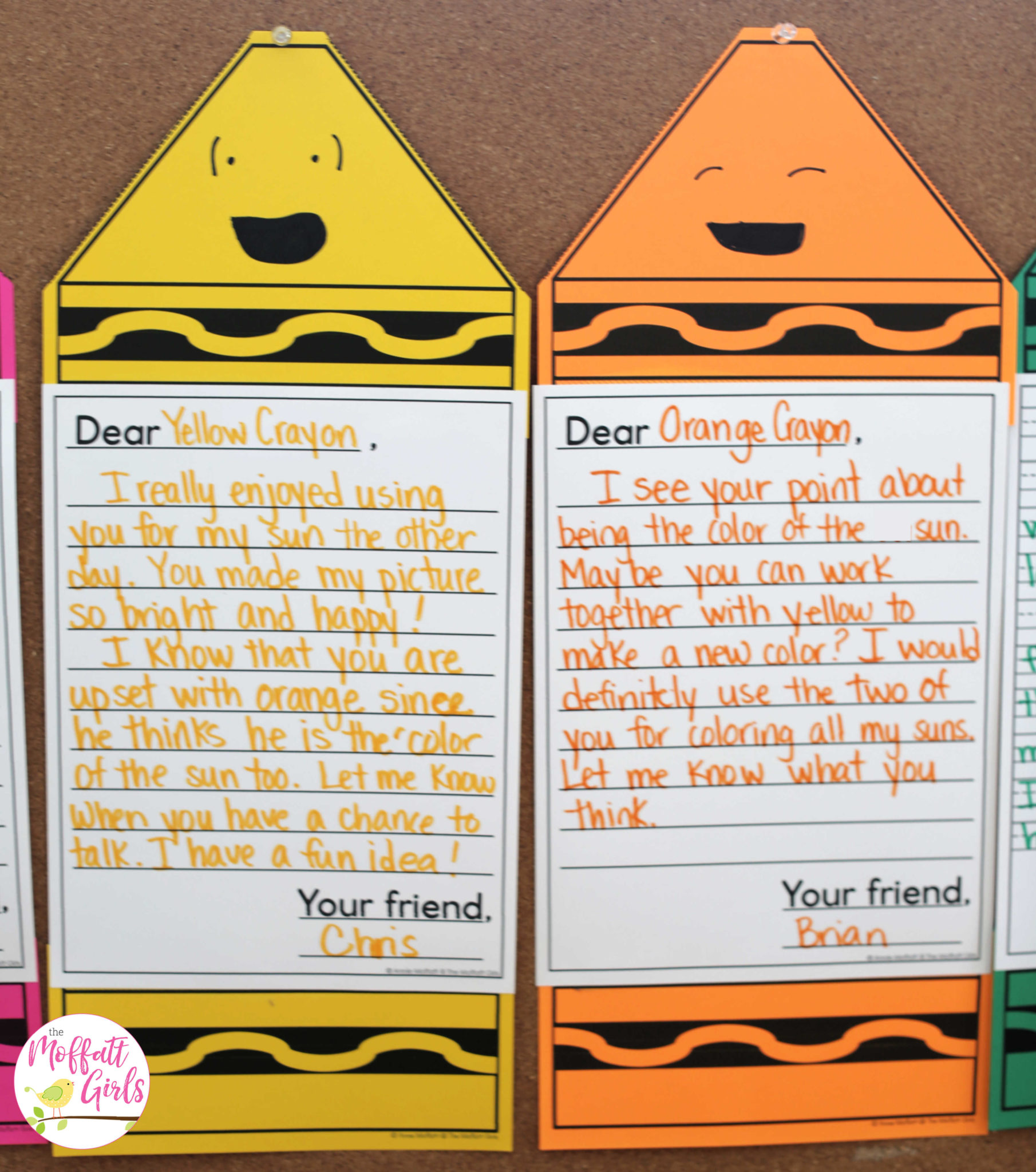
As I release more books into this growing bundle, I will add more pictures to this blog post. So be sure to check back in to see more!
To see Quarter 1 of the 1st Grade Reading Comprehension, Click Here.
To see Quarter 1 of the Kindergarten Reading Comprehension, Click Here.
The post 1st Grade Reading Comprehension: Quarter 2 appeared first on Moffatt Girls.
